Dairy Absurdity At The Iowa State Fair
The shameless propaganda and the reality animal exploiters don't want you to see.
The Iowa State Fair is one of the top largest fairs in the country and spans eleven days, most of which I attended. Documenting fairs was a huge focus for me in 2019 as I also attended the Minnesota State Fair, the Houston Livestock Show and Rodeo, the San Antonio Stock Show and Rodeo, the Austin Livestock Show, and at least a few smaller county fairs. The state fair in Iowa is absolutely massive…the first day I was there the girl I was with tracked our steps on her phone and said that we walked 13 miles, some of which was walking from and back to the car, but most of which was walking around the fair. Not only was doing tons of walking with a heavy camera bag in the hot summer heat exhausting, but so was trying to decide what to document since there was always so much simultaneous exploitation and depravity taking place. And the most exhausting thing of all—taking in all of the ignorance, stupidity, apathy, cruelty, and gluttony that surrounded us.
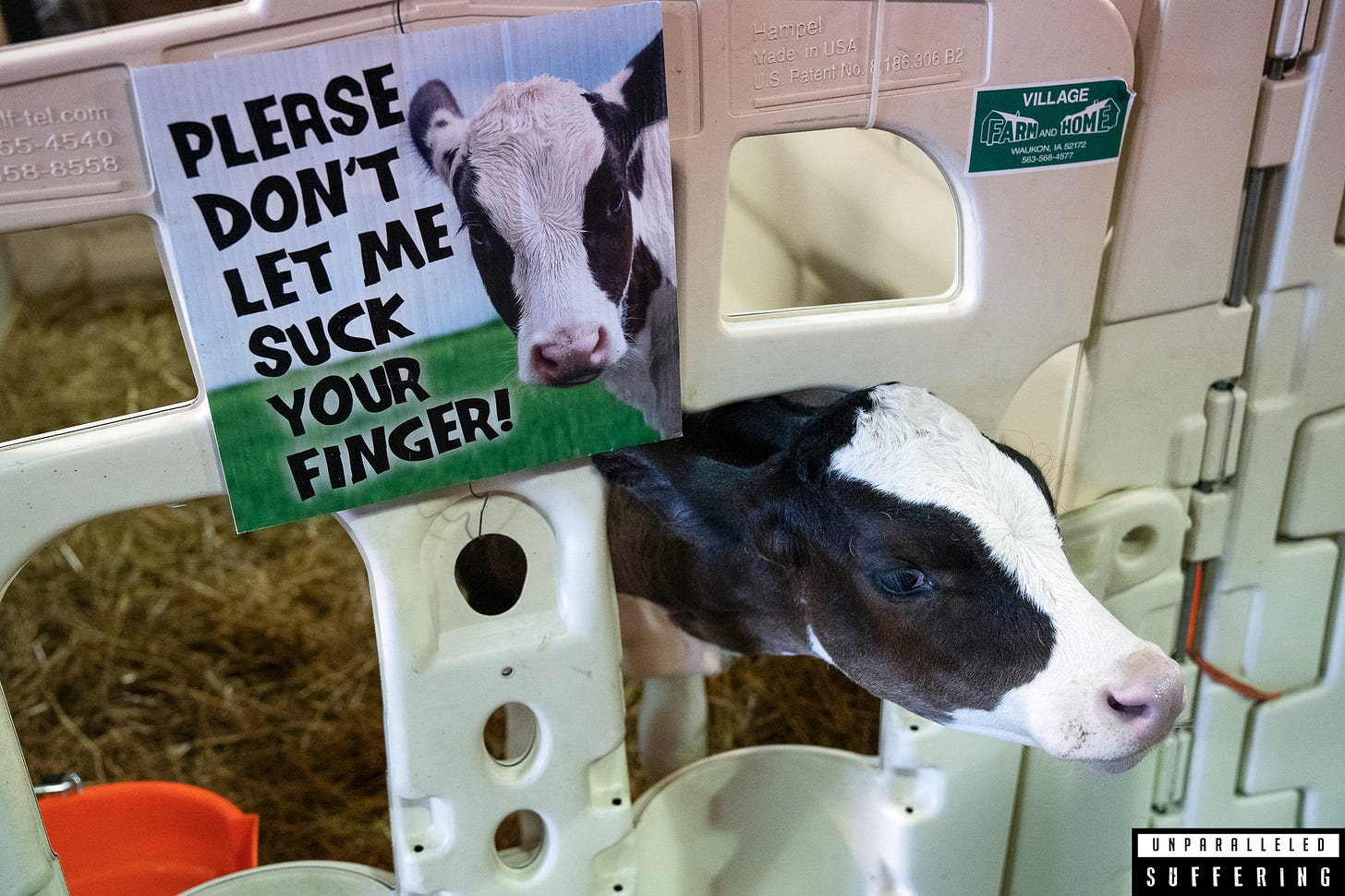
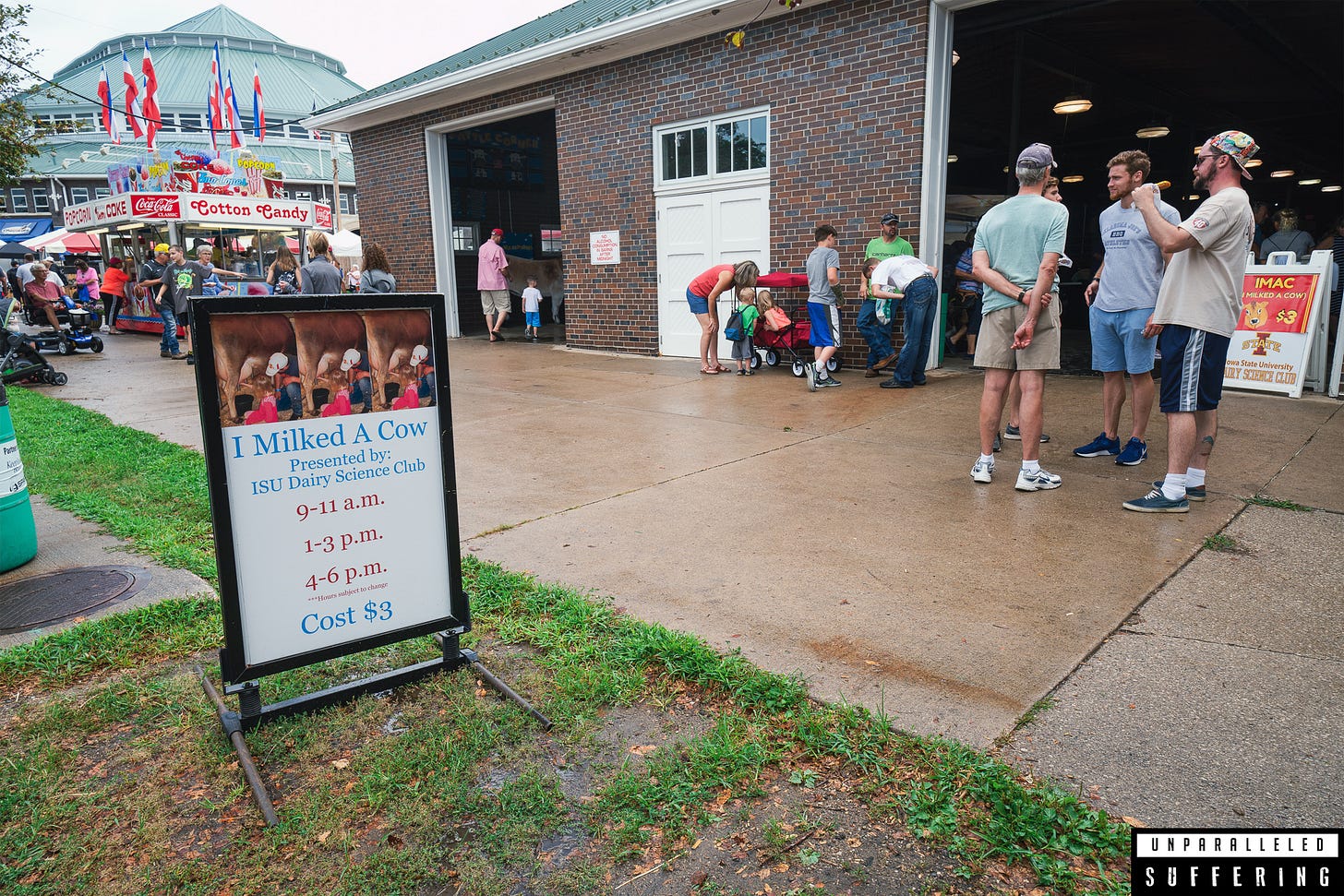
One of the propaganda displays in the dairy building was a photo book about a typical day in the life of a dairy farmer that tries to portray dairy farmers as people who are devoted to the health, well-being, and safety of their cows and who care deeply about providing nutritious food for everyday people like us.
The first page of A Day in the Life of a Dairy Farmer by Undeniably Dairy reads:
“Hi, I’m an Iowa dairy farmer. There are about 1,100 dairy farms in Iowa and 95% are family owned. Flip the pages to find out what I do on my dairy farm to produce wholesome, nutritious milk and dairy foods for you.”
“Family owned” and “family farm” are popularized meaningless terms that are used to humane wash different forms of violence inflicted onto nonhuman animals. So what if something is owned/run by a family member(s)? All types of people, no matter how awful they are towards humans and other animals, can find someone to get married to and have kids with—it doesn’t ultimately say anything about their character or how they relate to other beings. Ask any prostitute what their clientele is like and many of them will tell you mostly cheating married men.
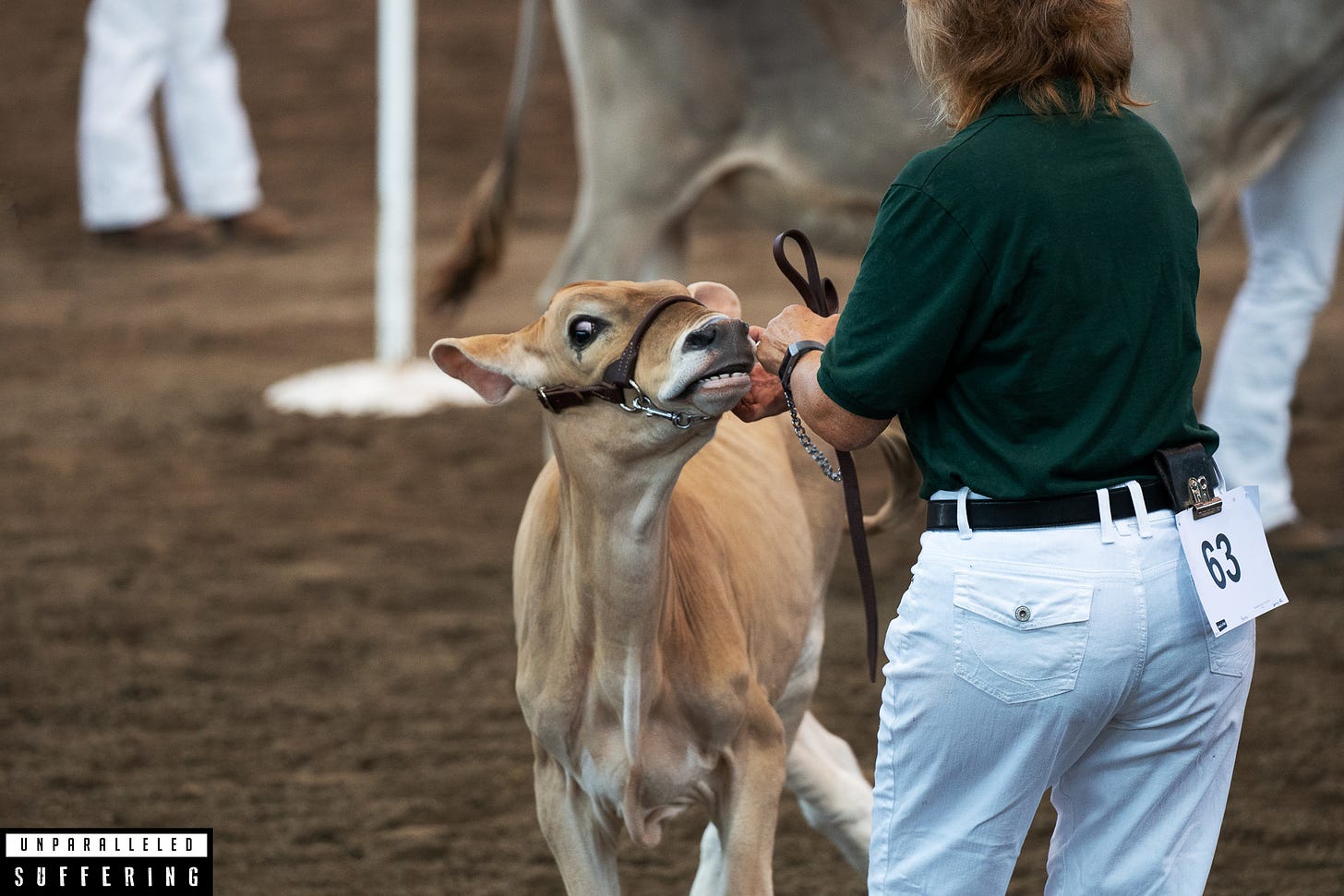
The second page of A Day in the Life of a Dairy Farmer reads:
3:15 a.m. “I wake up bright and early every day! I head outside to make sure all the animals are doing fine. It’s important that my cows have proper care because healthy cows and comfortable cows lead to the production of high quality milk.”
Dairy farmers want the public perception of dairy farms to simply be cows living outside on grass. But this simply isn’t the case for most cows as many of them are living indoors, on dry dirt lots, and in muddy pens. I’m guessing the majority of cows are living permanently indoors in Iowa, but I could be wrong because I’ve only visited one dairy farm in the state, although most of the dairy farms I drove by had cows housed inside freestall barns. They mention “healthy and comfortable cows” leading to the production of “high quality milk,” but what really leads to the production of milk is raping the cows with thawed bull semen—to impregnate them so that they can produce a baby and the milk nature intended for that baby. Of course this book isn’t going to mention the industry-wide artificial insemination process.
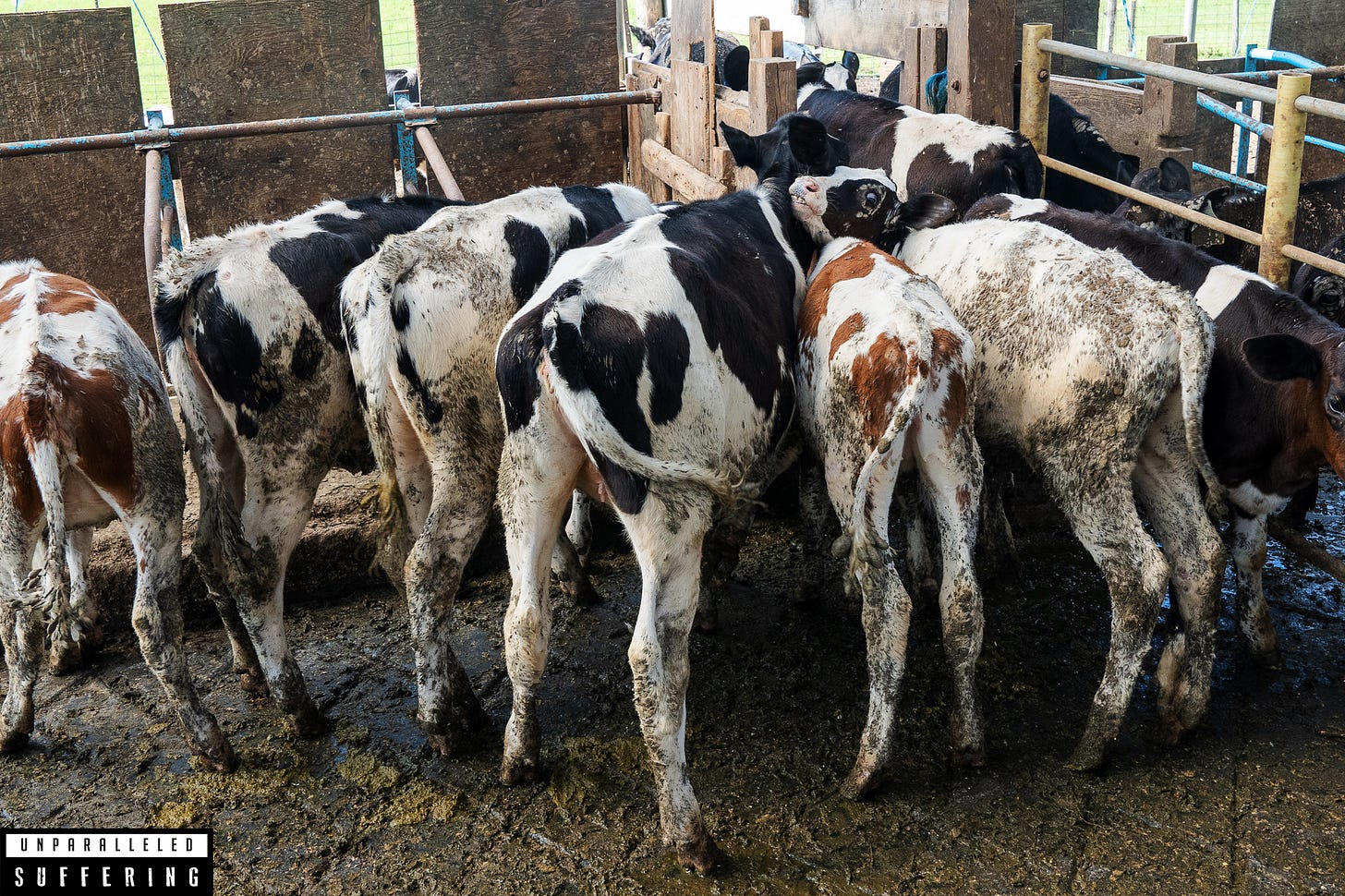

The third page of A Day in the Life of a Dairy Farmer reads:
4:00 a.m. “Time to milk the cows! I clean the udders before and after milking to make sure the milk is clean and my cows stay healthy. Dairy farmers follow safe management practices to ensure that equipment is sanitized and the milk is safe and wholesome. A milking machine delivers milk directly from the cows to a refrigerated tank where it is cooled to less than 45 degrees to preserve freshness and safety. After milking, our milk hauler comes to load the milk in his tanker and take it to the processing plant.”
When consumers buy milk at the store it may look clean, but that’s only because we don’t have the capacity to see everything that’s actually mixed within it. Cows milk will contain some level of blood, feces, and pus (industry refers to this as somatic cell count or SCC). Pus is formed from cows who have common infections like mastitis. The pus is a thick, yellowish-white fluid that contains bacteria, white blood cells, and tissue debris. The white blood cells indicate that the immune system is working to battle an infection. SCC is the industry's measurement of white blood cells per milliliter of milk and the current upper limit in the US regulated by the FDA is 750,000 per milliliter.
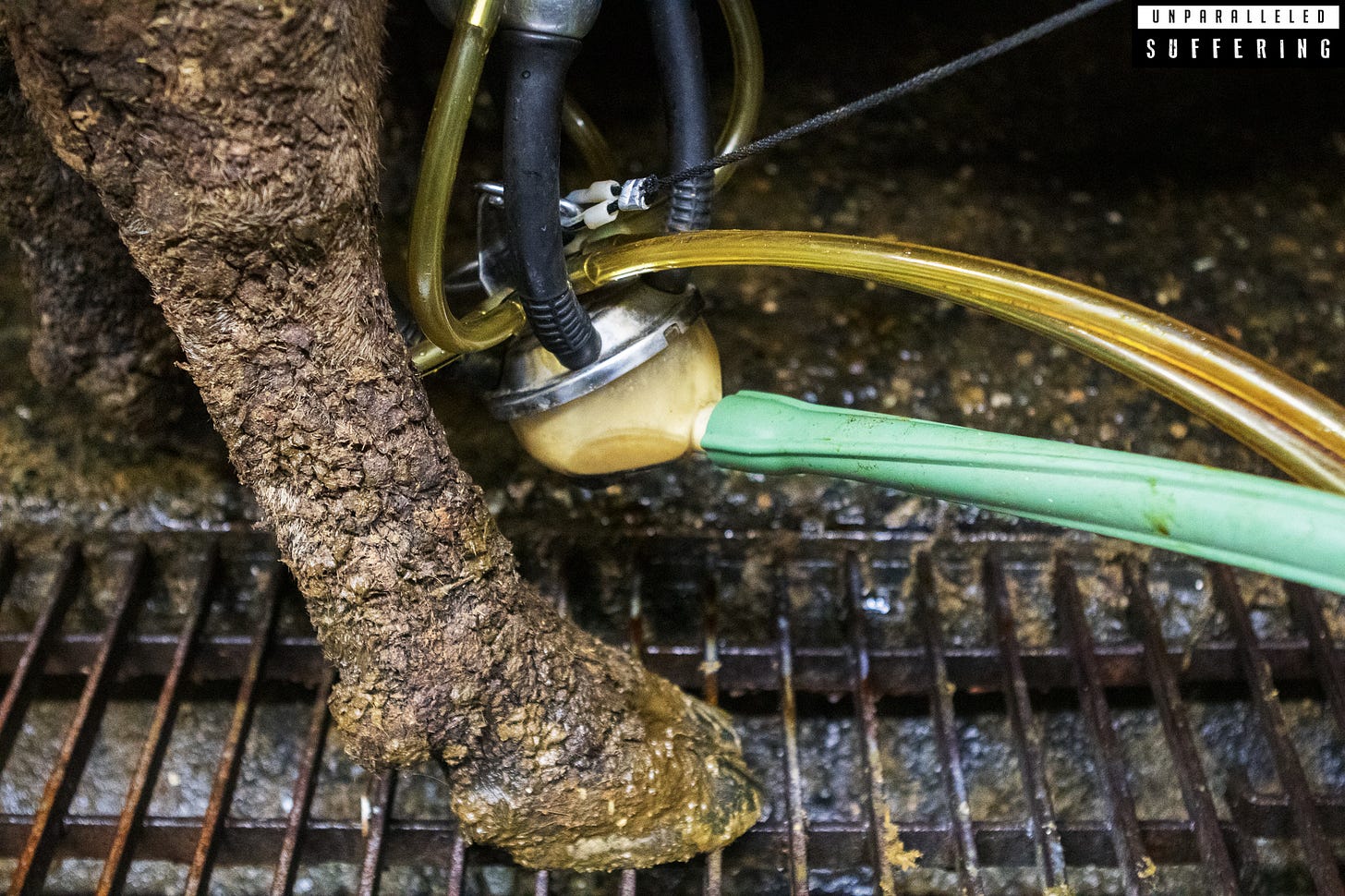
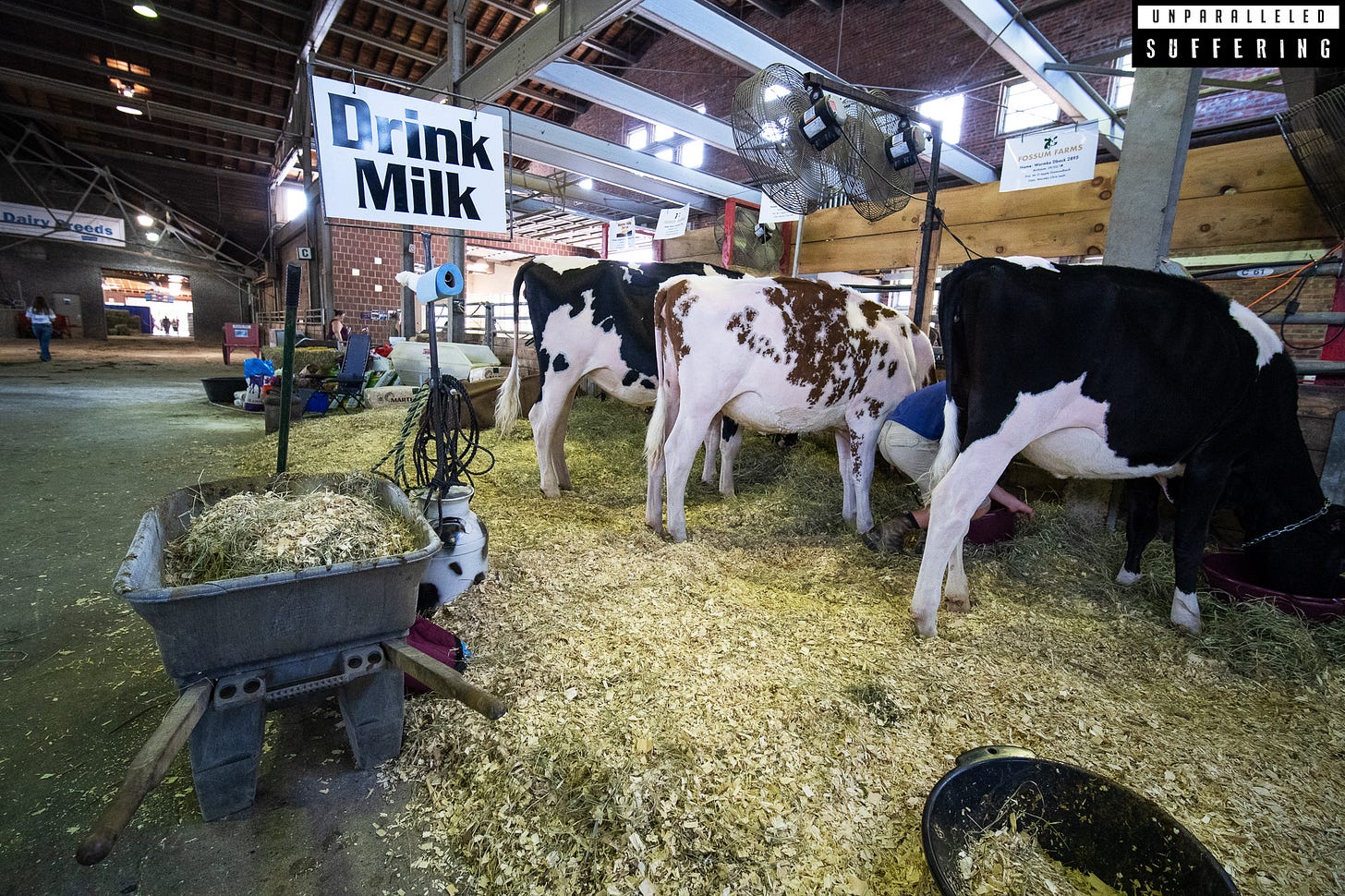
The fourth page of A Day in the Life of a Dairy Farmer reads:
7:00 a.m. “Now it’s time to feed the cattle. I feed them a mix of food that is well-balanced and nourishing. A nutritionist who specializes in the cow’s diet helps me decide what is best to feed them. Each cow will eat nearly 100 pounds of feed a day and produce between 6 and 8 gallons of milk each day.”
Most cows today are fed a pellet mixture of low-cost feedstuffs called a TMR (total mixed ration), which is economical, can be customized for cows at different ages and lactation stages, and can increase milk yields. TMR is mixed and formed in what's called a mixer wagon and can contain many disturbing and cheap fillers from rendered animals, including bone meal, feather meal, blood meal, fish meal, and processed manure and urine. Many modern cows used for dairy can produce daily milk volumes exceeding even 10 gallons, although their bodies were originally meant to only produce about a gallon of milk per day for their calf. They leave out the fact that cows will consume 50-100 gallons of fresh water each day, which is a big part of the reason why states like California are experiencing a water crisis.
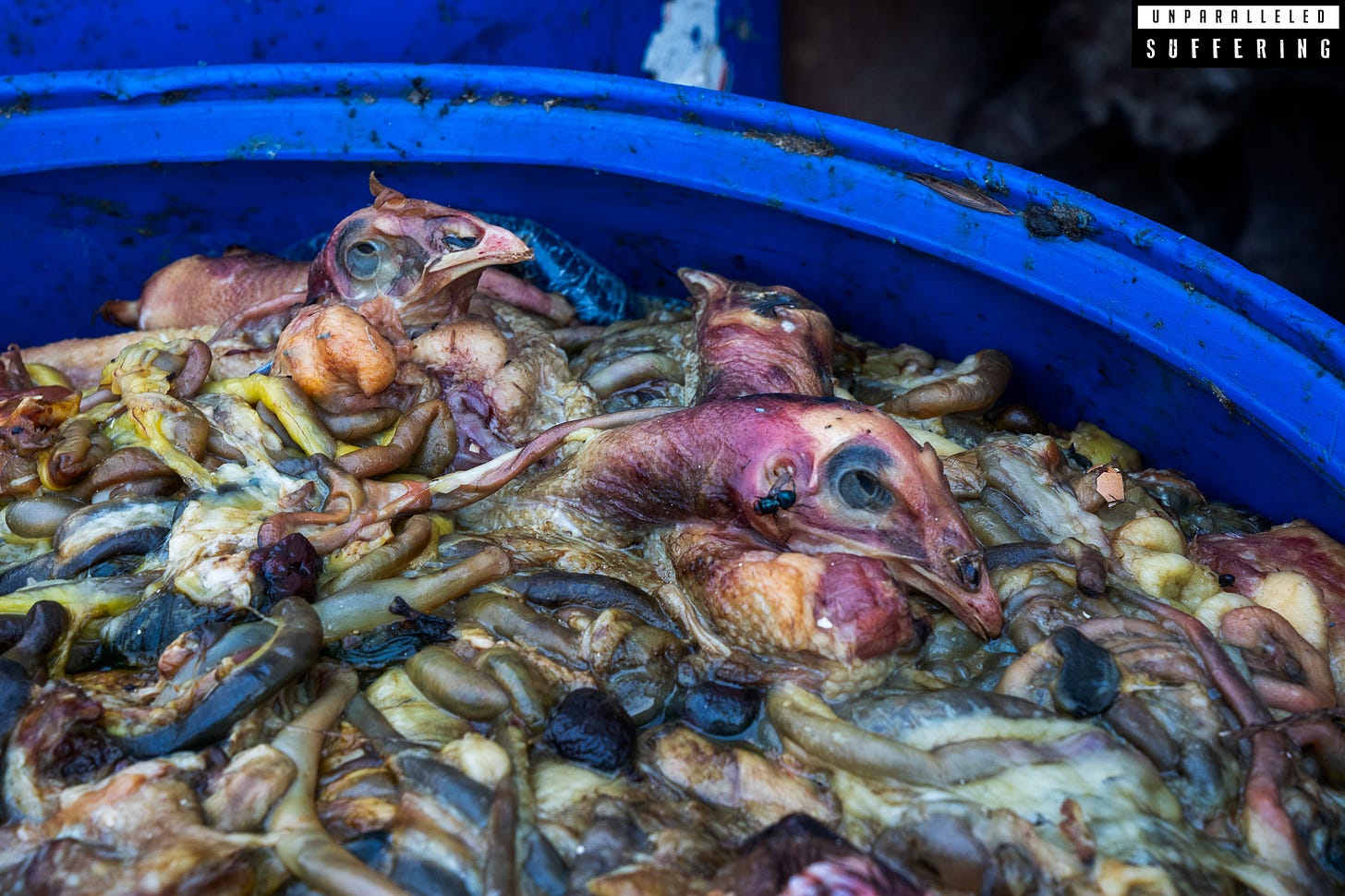
The fifth page of A Day in the Life of a Dairy Farmer reads:
8:00 a.m. “The calves are getting hungry! I feed them a bottle of milk just like you had when you were a baby. Feeding them individually assures they receive good nutrition and the right amount of milk they need to grow. I also make sure they have fresh water and feed for the day.”
The milk calves are typically fed by dairy farmers is completely incomparable to the milk human babies are given. Calves are generally fed milk replacer that contains all kinds of garbage that human babies are not consuming. Besides dried skimmed milk and whey, it can also contain animal fat, animal plasma, vegetable oil, casein, lecithin, and vitamin and mineral supplements among much worse ingredients. Milk replacers may also contain aquatic and land meat and bone meal, dried blood, soy, cottonseed, and brewers yeast. Calves will drink this out of bottles with a rubber nipple or from a "nursing" bucket. These babies would normally nurse from their mother around twenty times per day, but on dairy farms they are given milk replacer twice daily.

The sixth page of A Day in the Life of a Dairy Farmer reads:
10:00 a.m. “There’s a calf I need to take care of. I work closely with a veterinarian who helps me keep my animals healthy by providing periodic check-ups and vaccinations.”
Sick calves is business as usual at dairy farms. Calves can become sick for various reasons, but the stress of being a naturally social and playful animal who has to spend all their hours and days restricted in isolation and has no access to their primary caretaker, their mother, can produce more than enough stress to make them sick.
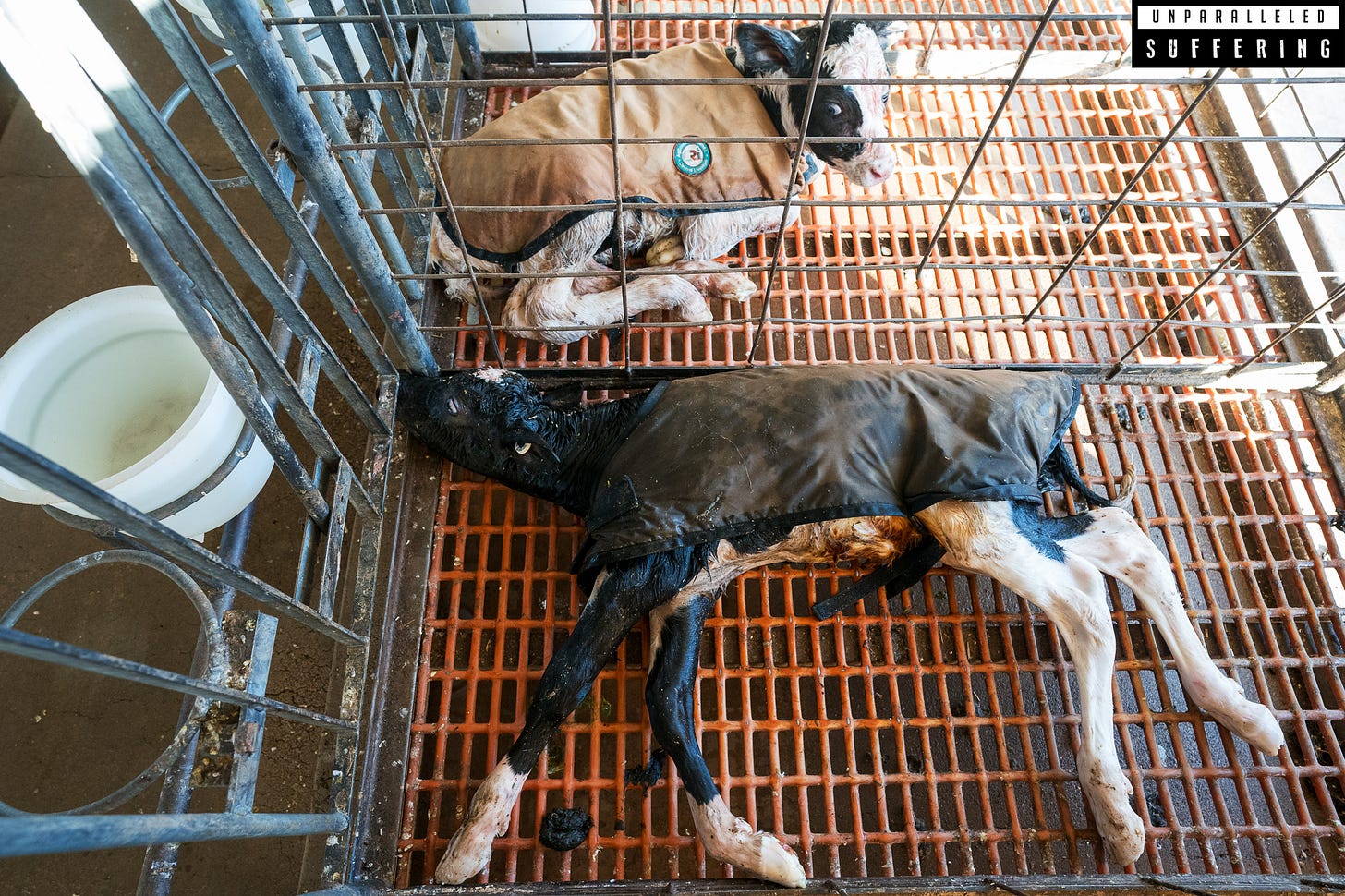
The seventh page of A Day in the Life of a Dairy Farmer reads:
Noon “Lunch time! Now that all my animals have been fed, it’s time for me to take a quick break for lunch. I often think about how the things I do on the farm every day, result in all the great tasting and nutritious dairy foods we enjoy. My favorites are chocolate milk, cheddar cheese on a sandwich, and blueberry yogurt.”
It’s always funny to me when dairy farmers make health claims because I almost never see a dairy farmer who actually looks healthy. I’ve been to many dairy farms, fairs, and the World Dairy Expo twice and these animal exploiters are generally some of the most unwell looking people I’ve ever seen.

The eighth page of A Day in the Life of a Dairy Farmer reads:
1:00 p.m. “Lunch is over. Time to get back to work. This afternoon I’m making sure the cows and calves have a clean, dry place to rest. I give the calves fresh straw to lay on and the cows will get a new layer of sand in their beds. Cows love laying on the sand it’s like relaxing on the beach.”
Never have I ever been to a dairy farm and seen the calves or cows in clean enclosures. Given how much waste cows produce on a daily basis and how many cows dairy farms have, keeping their areas clean would be a type of undertaking that no exploiters are going to have enough patience or concern to implement. What they refer to as “sand” is actually dried manure. Do you think laying on dried human feces would be like relaxing on the beach?
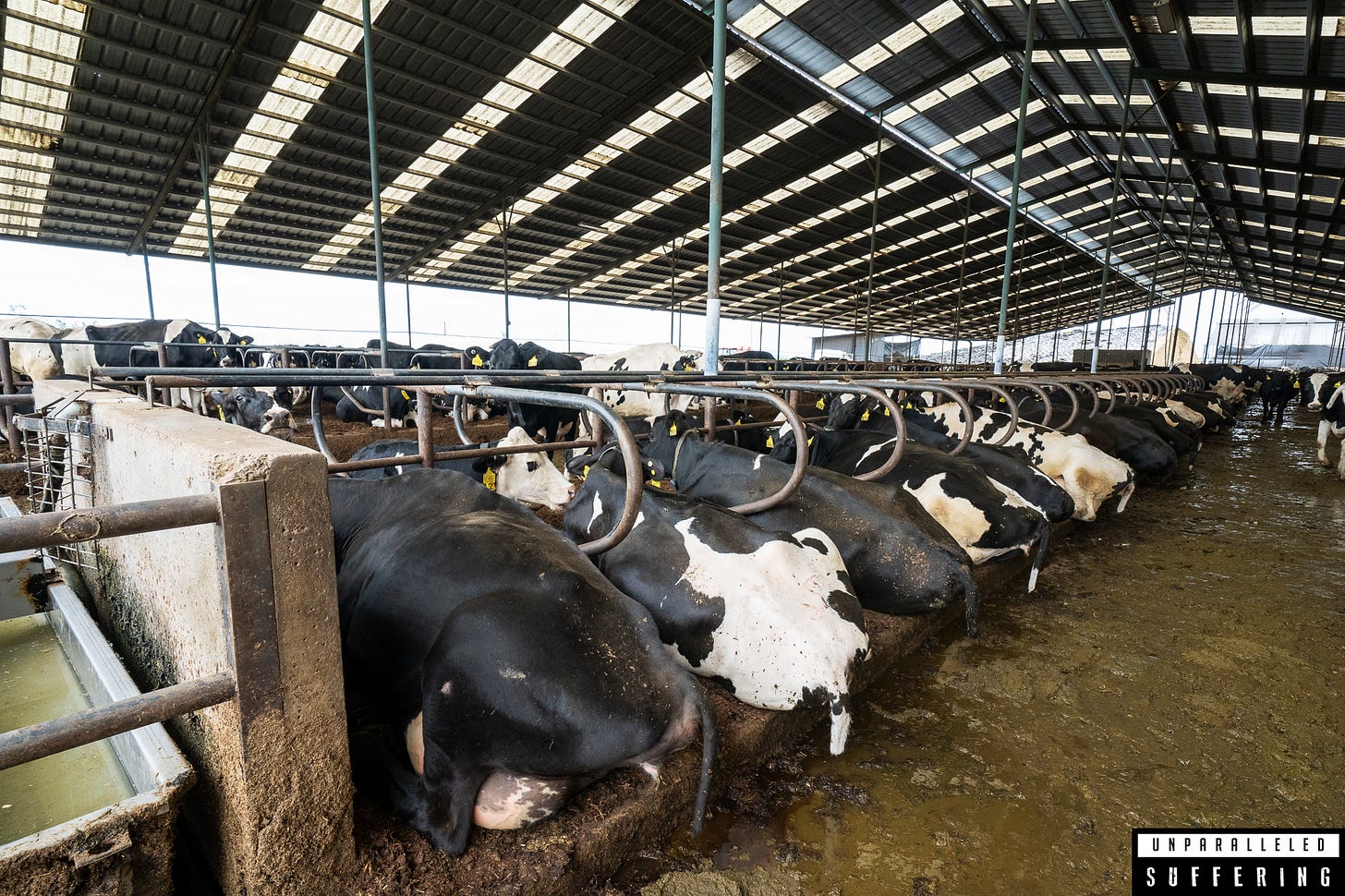
The ninth page of A Day in the Life of a Dairy Farmer reads:
3:00 p.m. “Time to feed the calves again! They get really excited for their bottles of milk. Then it’s time to feed the cows.”
The calves are not excited for their milk, they are simply desperate to satisfy a need and an instinct to nurse and consume milk. If they were with their actual mothers they could do this whenever the appetite for more milk comes , but when they’re at the mercy of their human exploiters they only get two opportunities a day for ingesting milk.

The tenth page of A Day in the Life of a Dairy Farmer reads:
4:00 p.m. “Time for the afternoon milking. I milk my cows twice a day. Unlike most jobs, dairy farmers work every day, even weekends and holidays. It’s a full-time job being a dairy farmer.”
Those awfully kind dairy farmers, never taking a day off from doing things to make more profit off of their enslaved animals. Unfortunately cows are not machines and you can’t hit pause on their milk production to make the lactations stop for days like Thanksgiving and Christmas. Luckily many of them have immigrants to do all their dirty work on holidays and non-holidays alike.
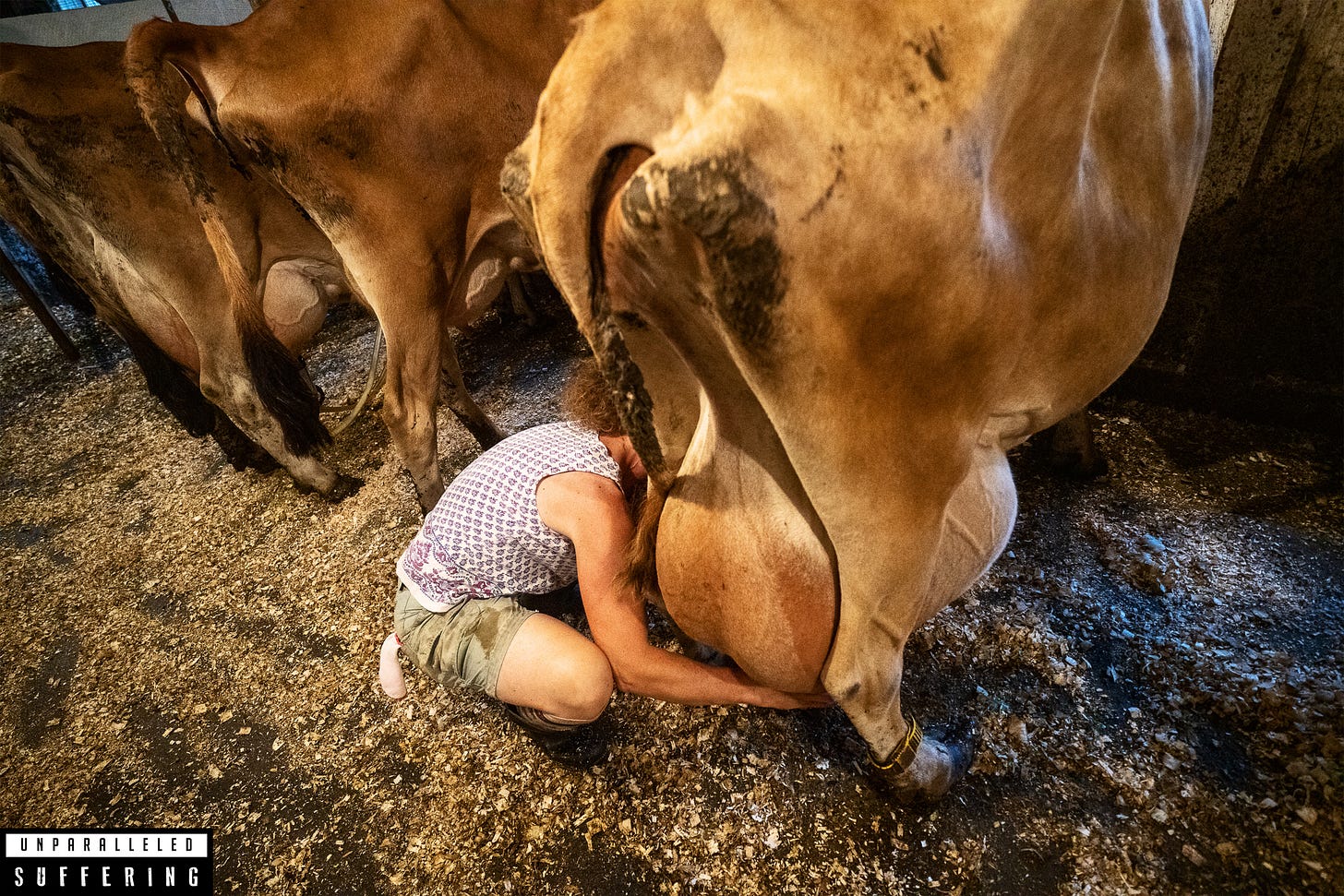
The eleventh page of A Day in the Life of a Dairy Farmer reads:
8:00 p.m. “Works not done yet! After I’m finished with all the chores, I wash all the milking equipment so it’s clean for tomorrow morning. Then I go inside to eat and relax with my family. After that, there is usually more work to be done especially in the spring when we plant crops, during the summer when we cut alfalfa hay, and in the fall when we harvest crops.”
Another obvious thing that would be omitted from a book like this is the dairy farm manure lagoons, some of which hold millions of gallons of cow waste. Cows used for dairy typically produce about 120 pounds of manure per day, far more than a human would produce in a whole month. Human waste generally gets processed through plumbing and treatment plants, but for dairy farms the waste makes its way into our groundwater and poisons it along with streams, rivers, and oceans—ultimately leading to vast and unconscionable dead zones. The contamination can even reach aquifers that provide drinking water to millions of people. Dairy farmers typically spray the manure from the manure lagoons onto the soil and will refer to this as being sustainable and eco-friendly when it’s used to help grow feed crops.
The final page of A Day in the Life of a Dairy Farmer reads:
9:45 p.m. “Time to call it a day. Before I go to bed, I always check on my animals again. I can’t sleep until I know the cattle are comfortable for the night. Cow health is my top priority because that means they will continue to produce wholesome, nutritious milk.”
One last thing I’d like to discuss that is no surprise for being omitted about dairy farming is that there’s no mention of sending these cows off to be killed when they are usually only 4-5 years old, a small fraction of a normal lifespan. This is oftentimes the result of greatly decreased milk production or from the cows having severe health issues that don’t make economic sense to treat. In fact, every time I’ve flown my drone over a cow slaughterhouse there have always been cows who can’t make it off of the truck they were shipped in because they are either dead or downed. When they are downed a worker will slice their throat in the truck and then use a chain and construction equipment to drag them out.
Dairy farmers will say they treat their cows well so that the cows will produce milk, but we know that cows can produce milk if they’re treated poorly just like human women can produce milk if they are being treated poorly. The cows are viewed as nothing more than a means to an end. Cows are ends in themselves, they are not resources or machines, and they deserve to live free from humanity’s evil ways and desires no matter how long this evil has been socially accepted and perpetuated.
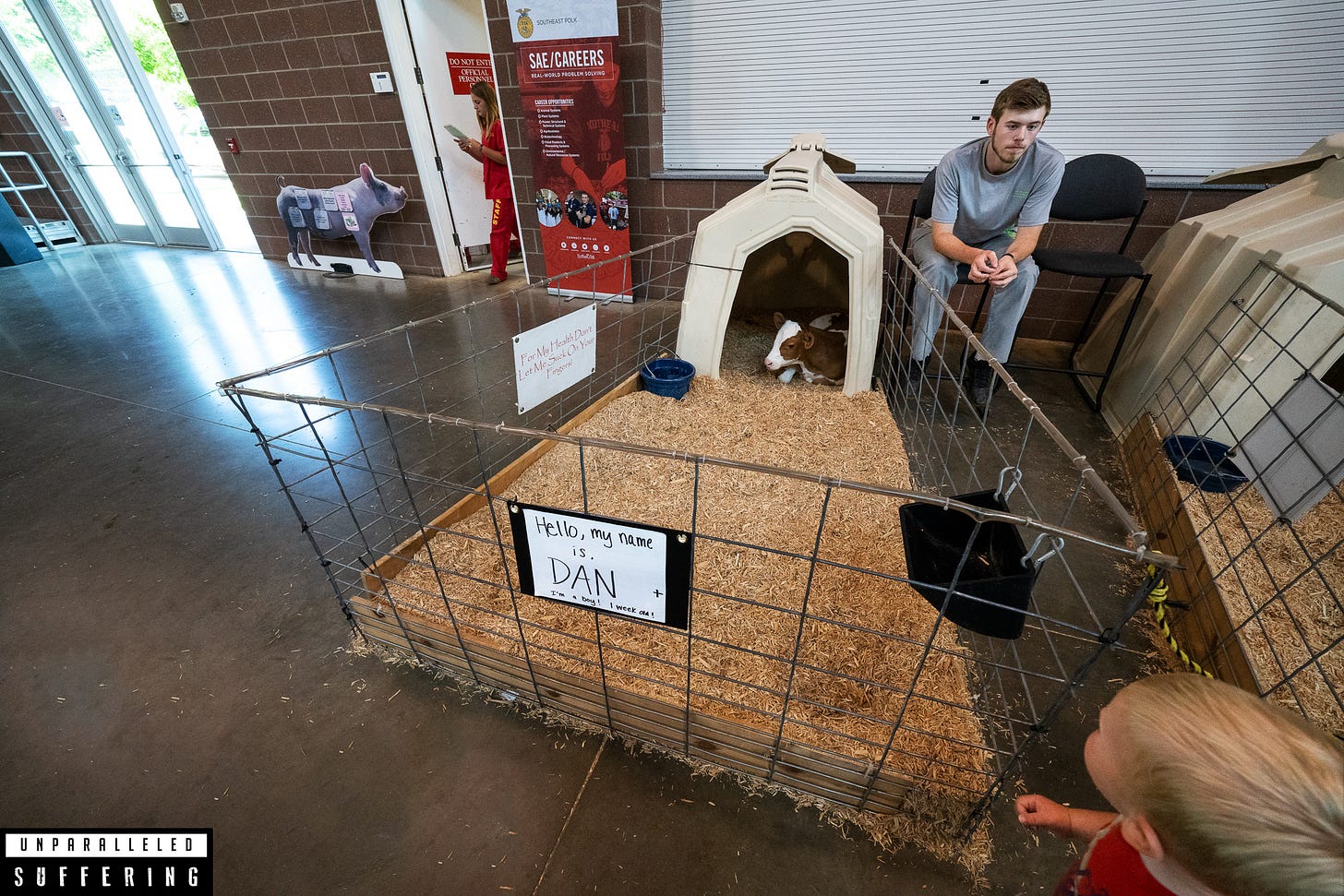


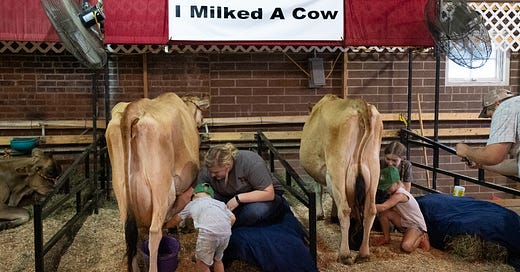



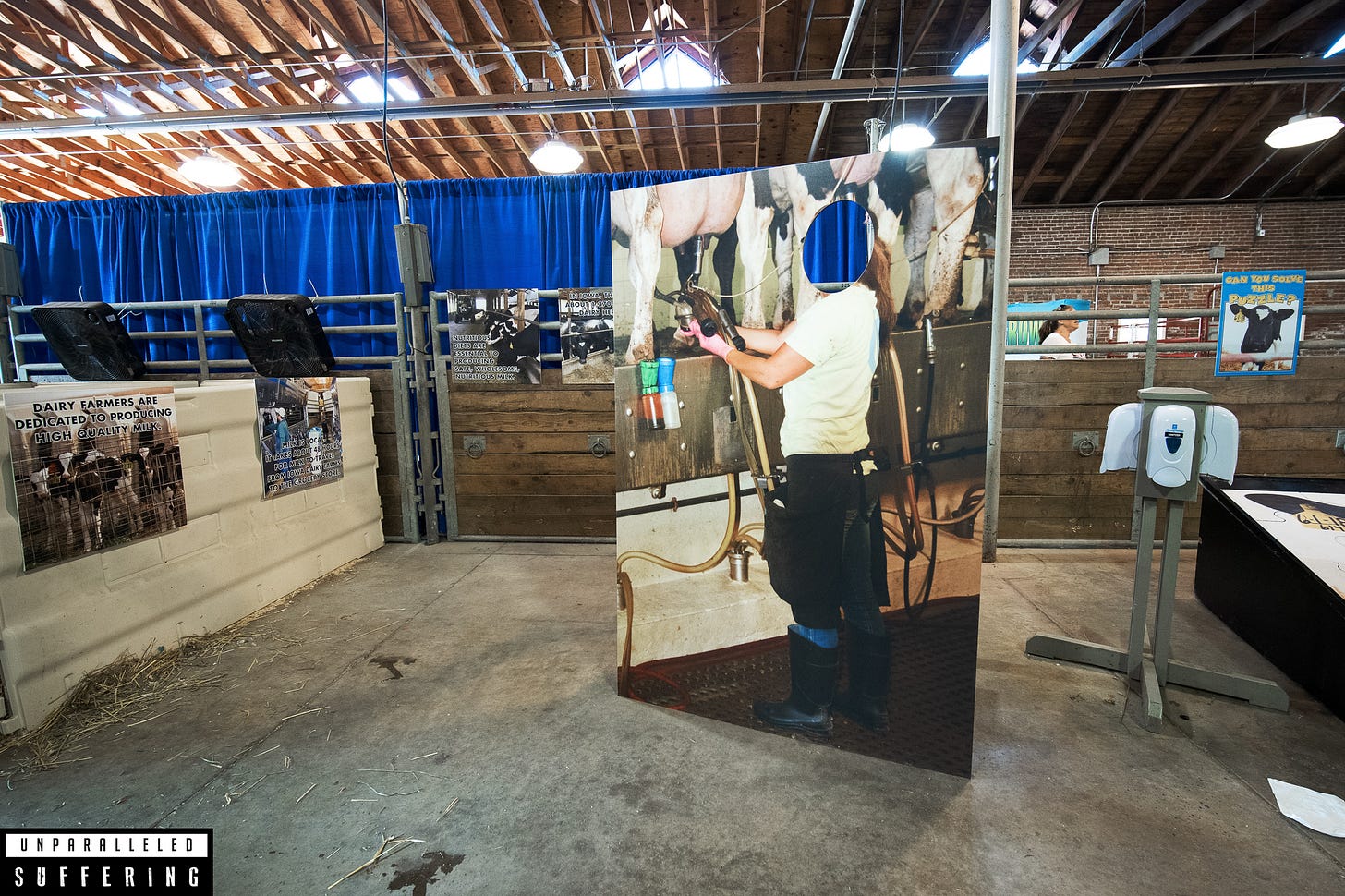


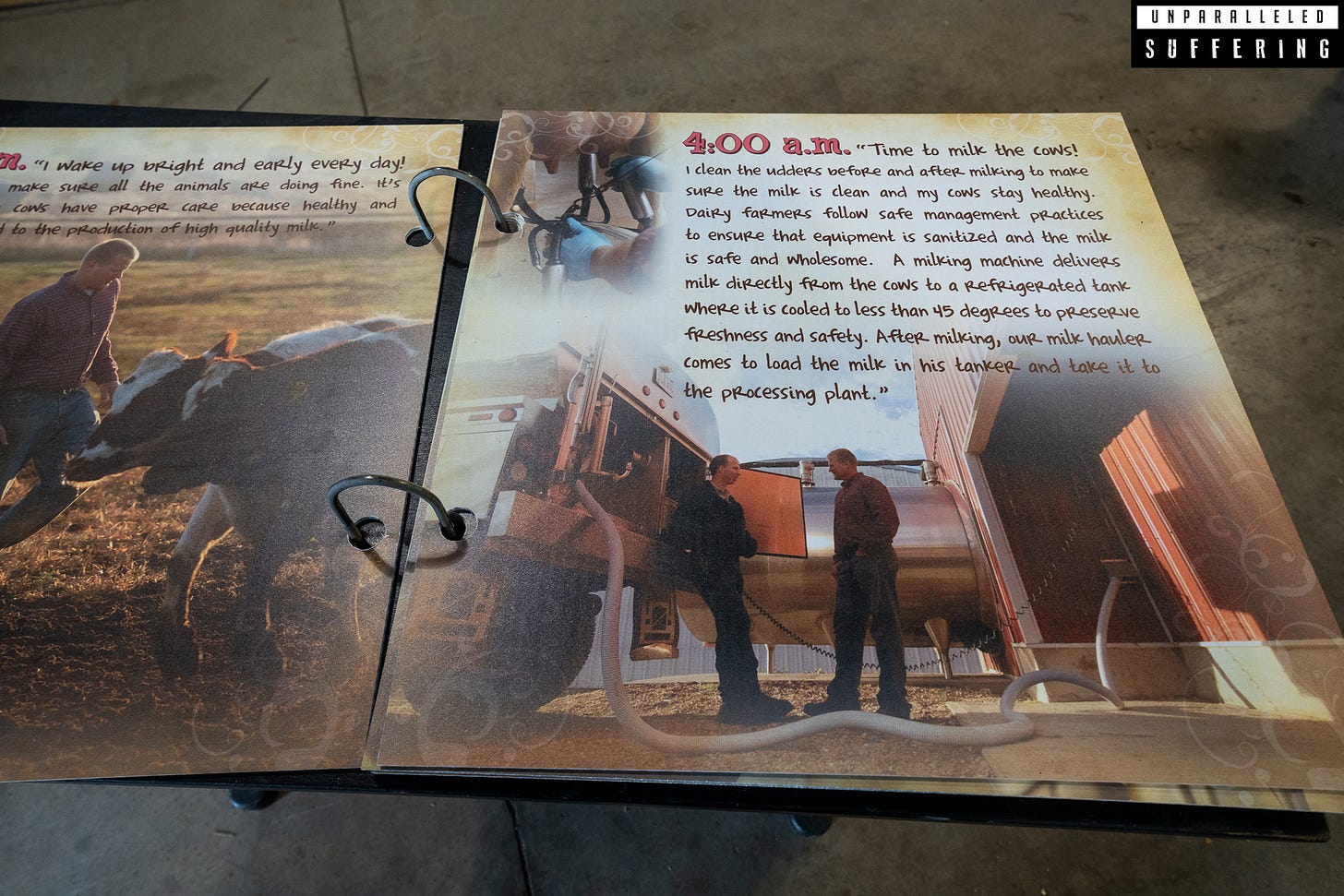
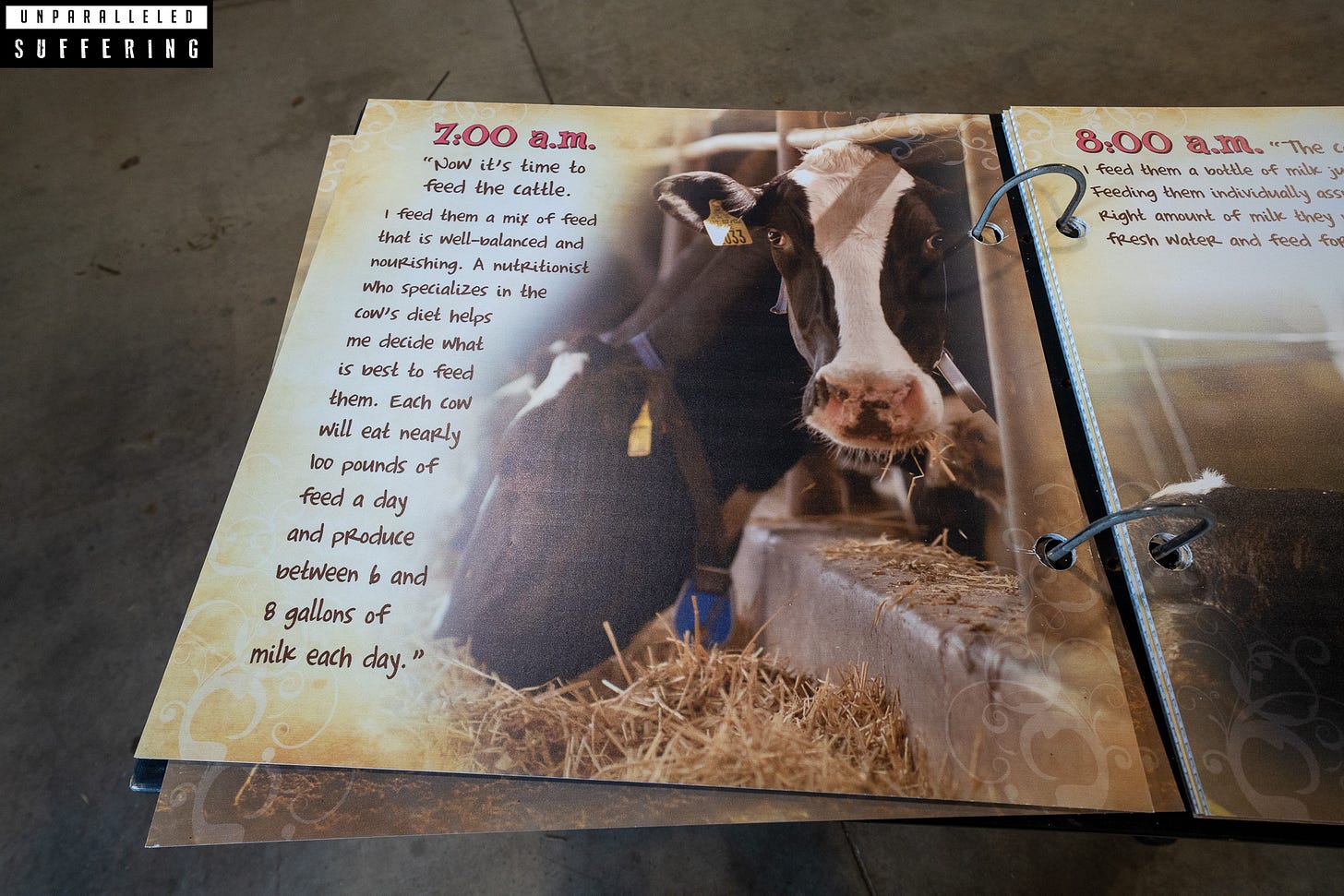
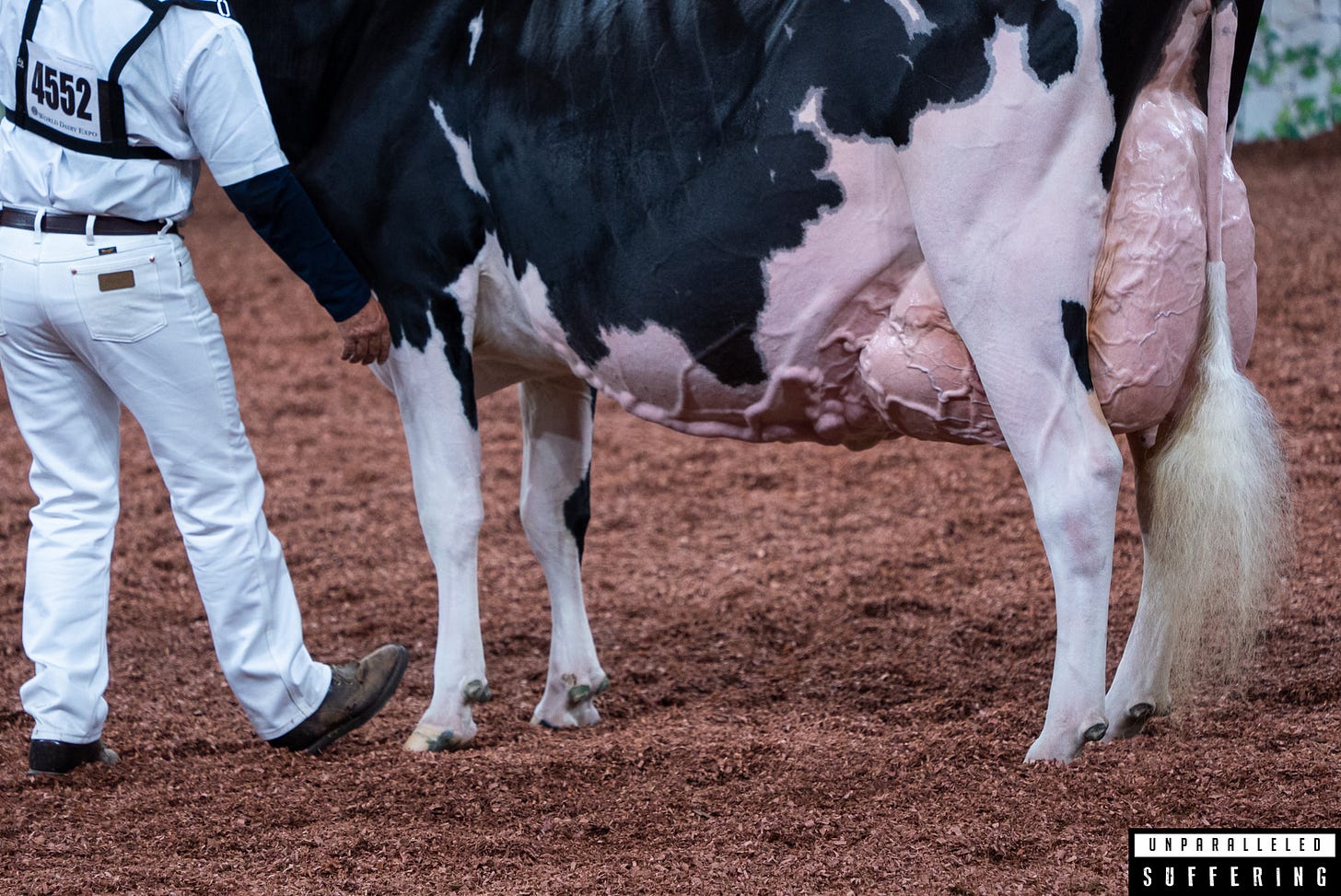
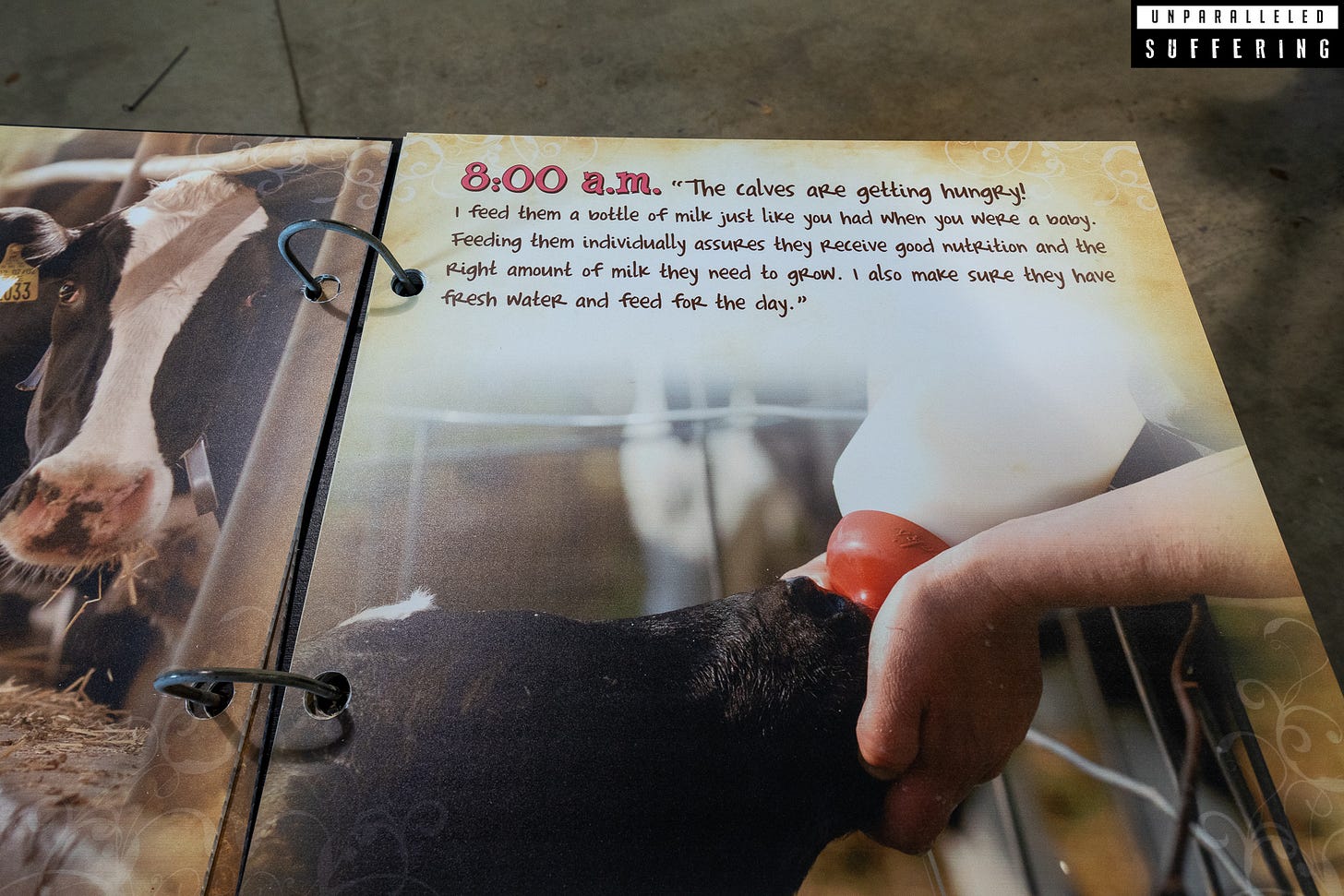
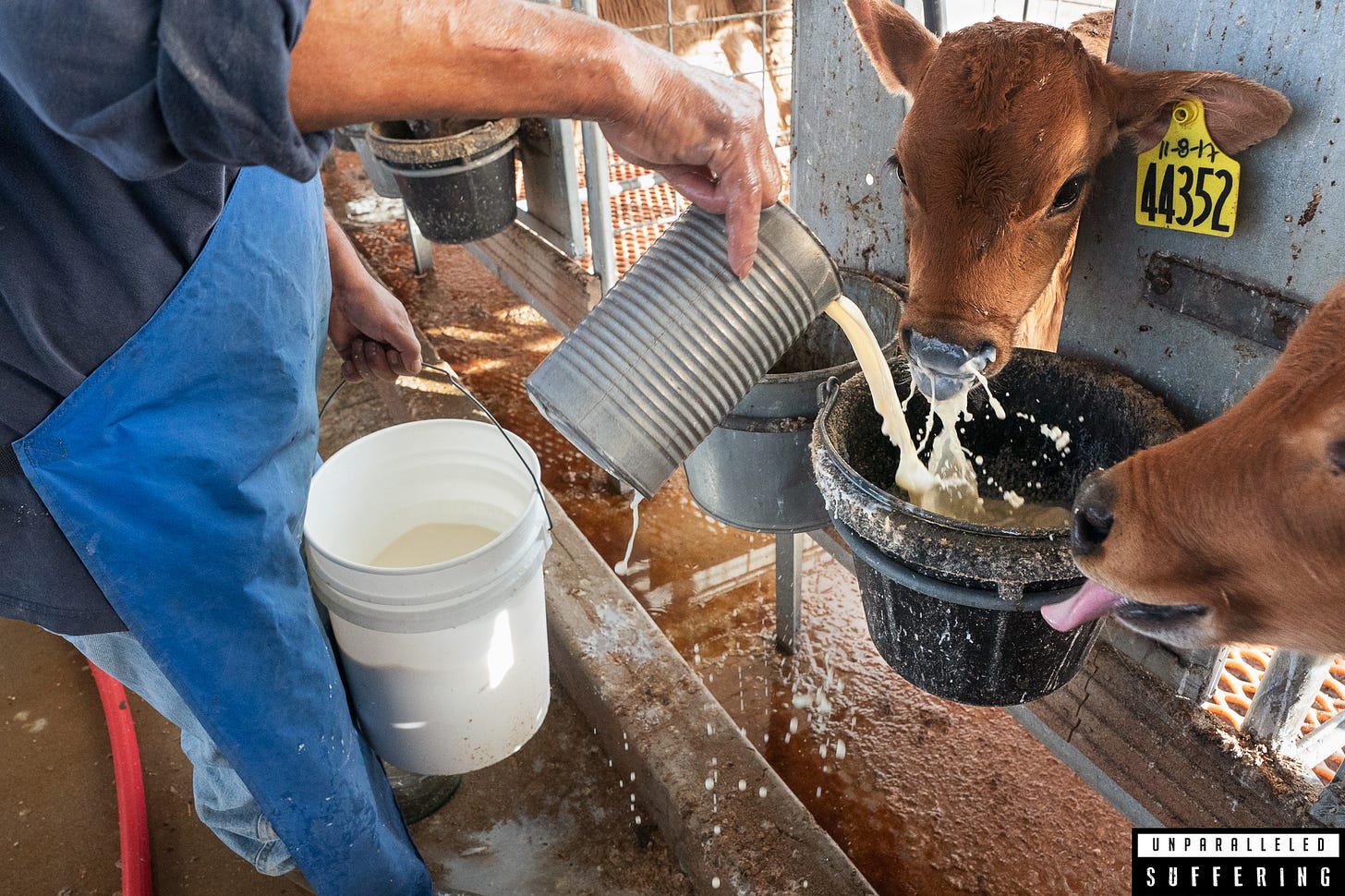
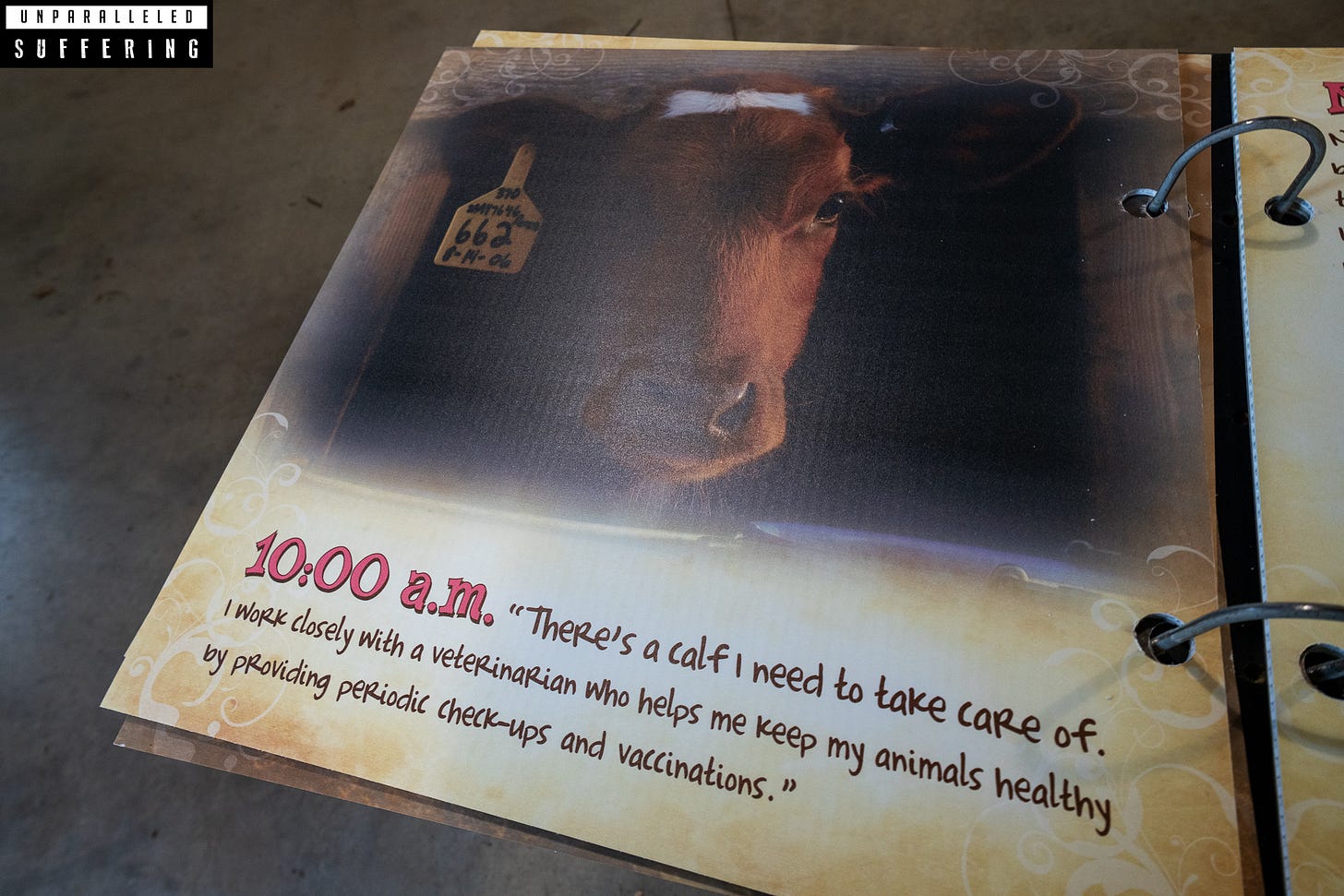
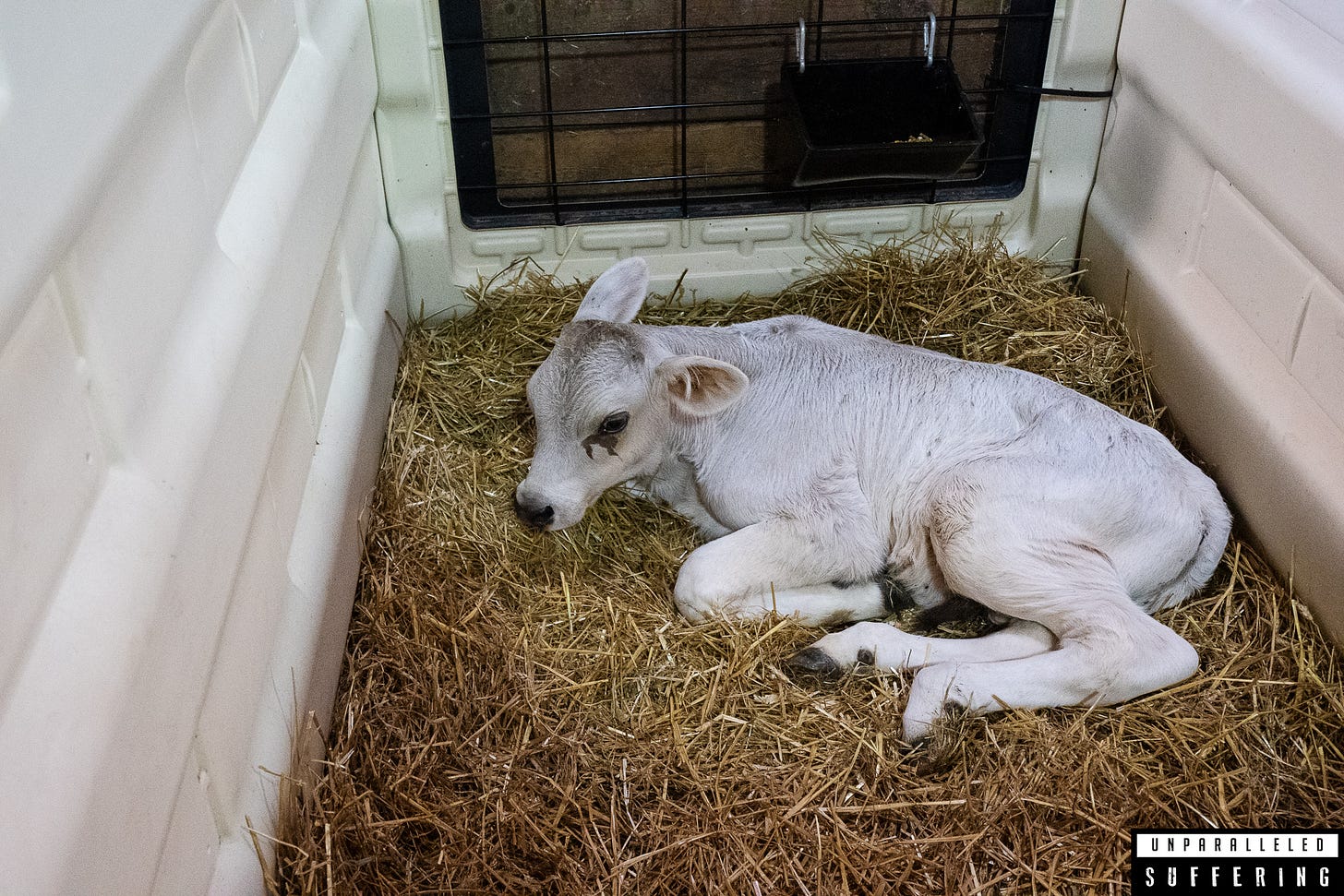
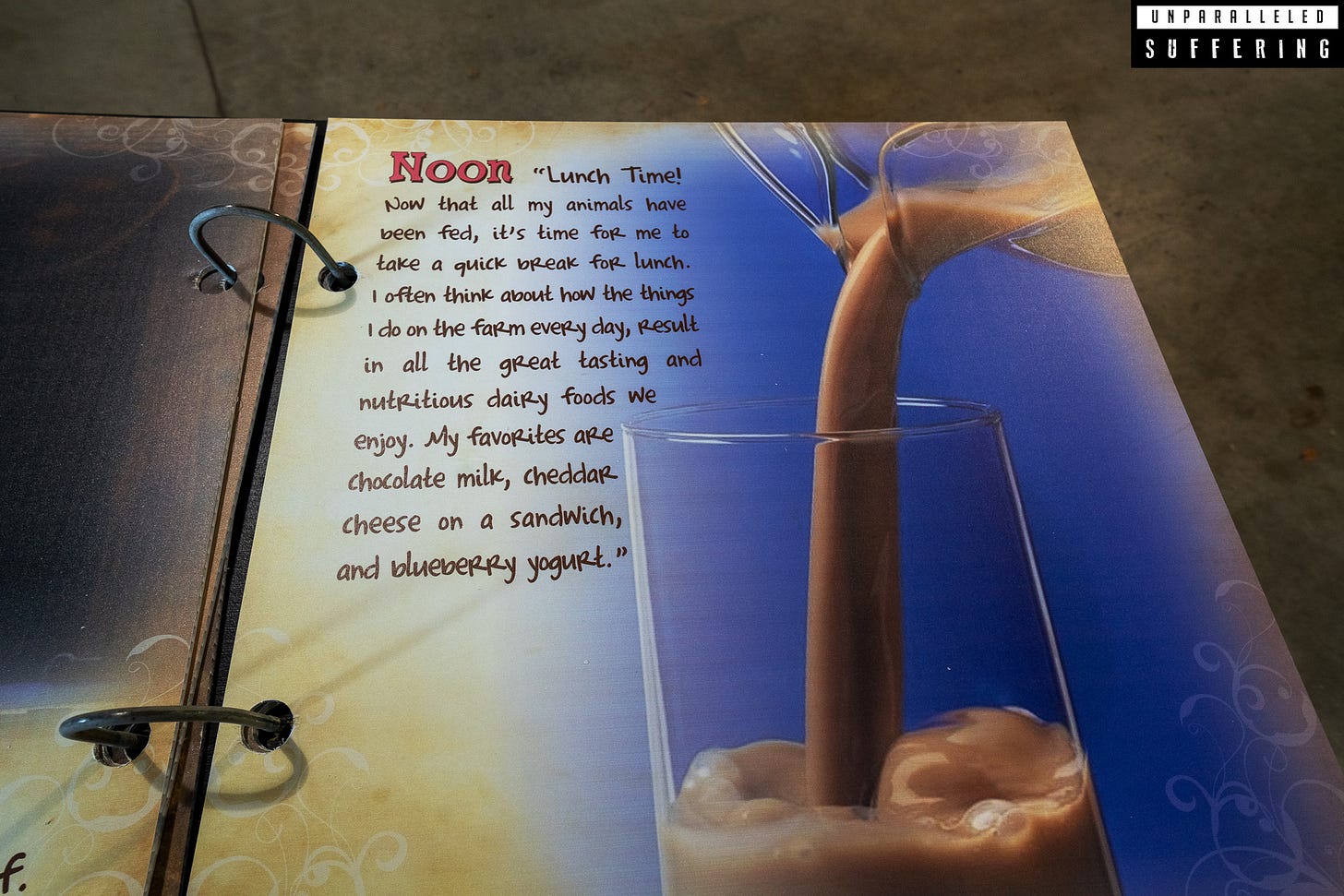
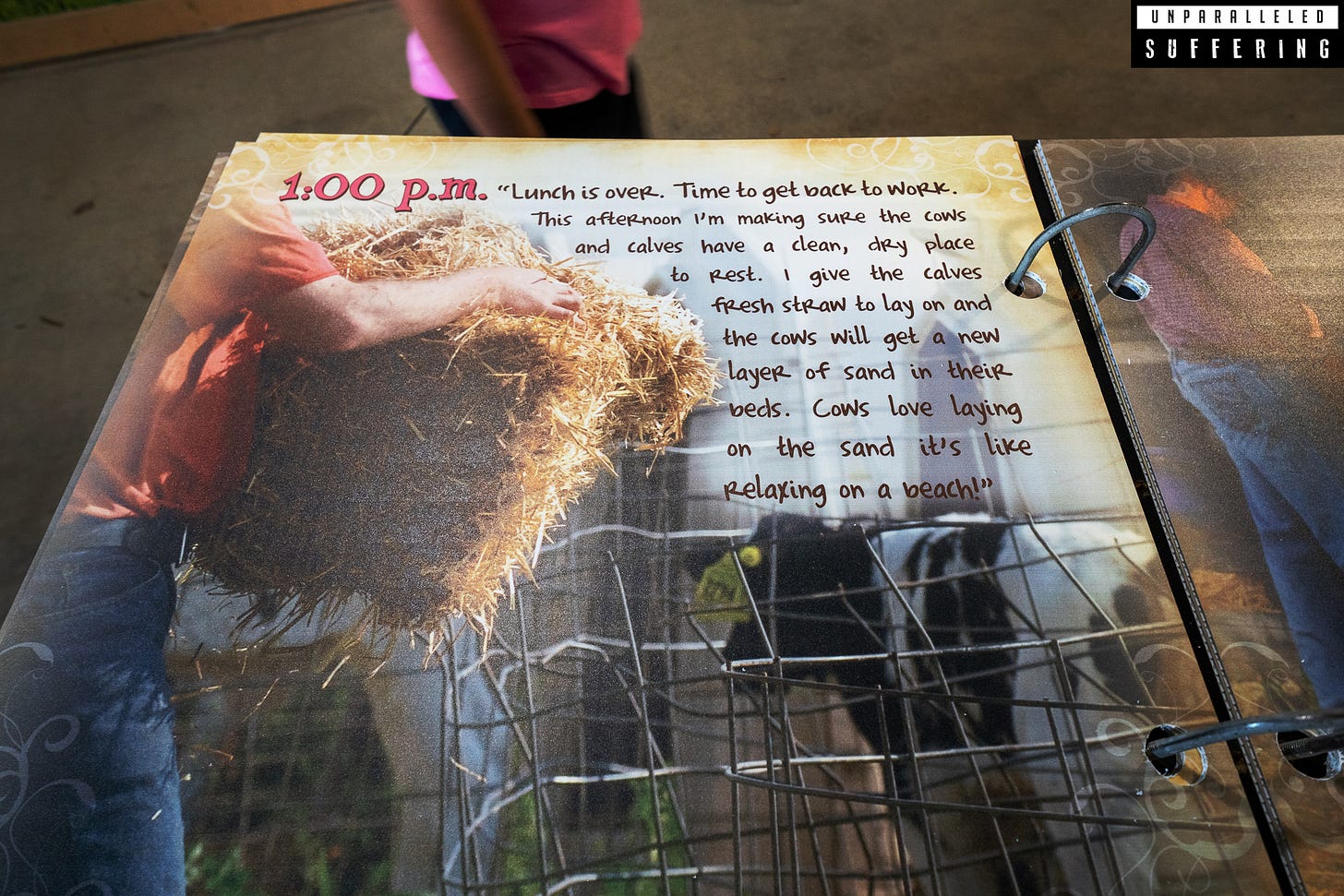
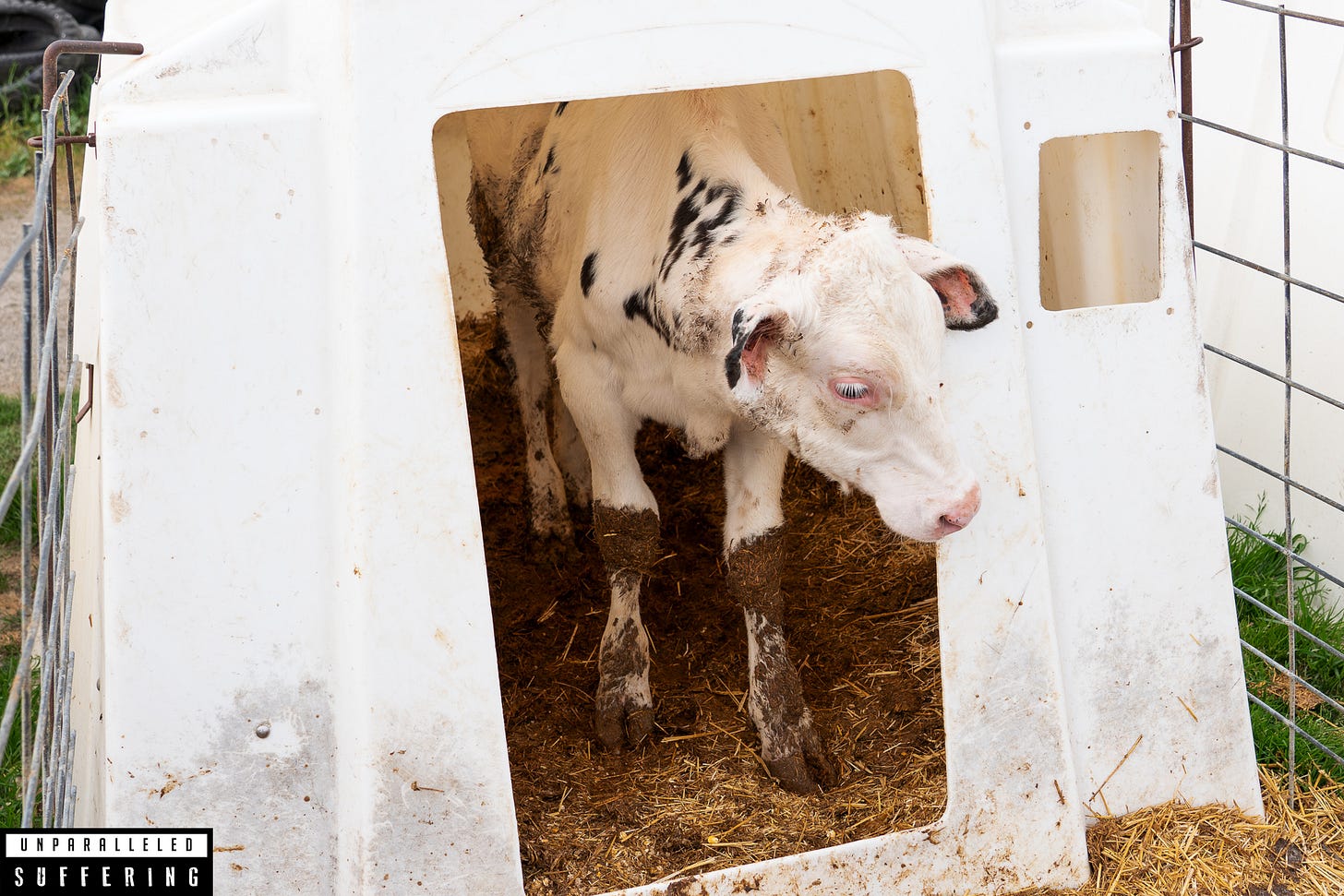
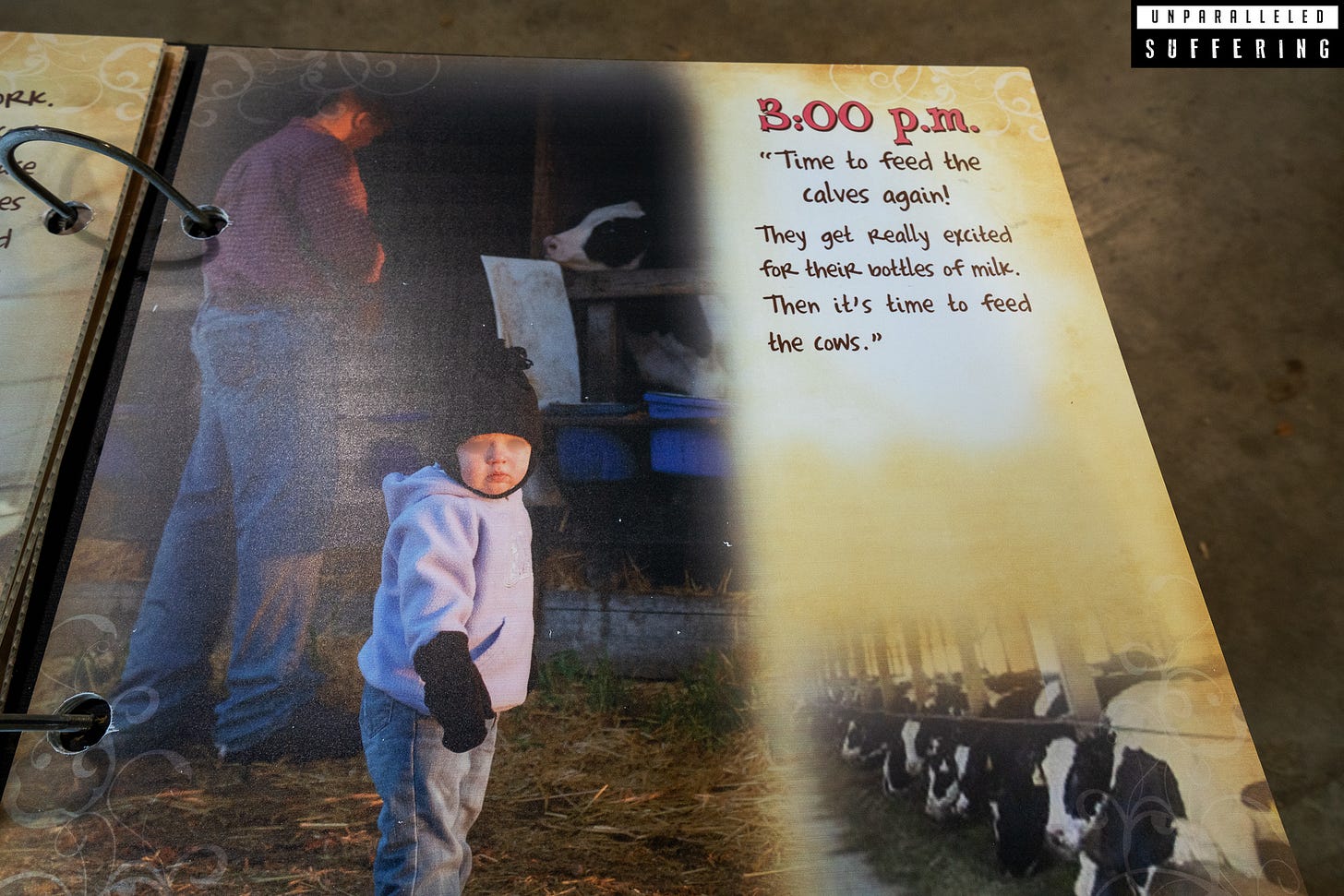
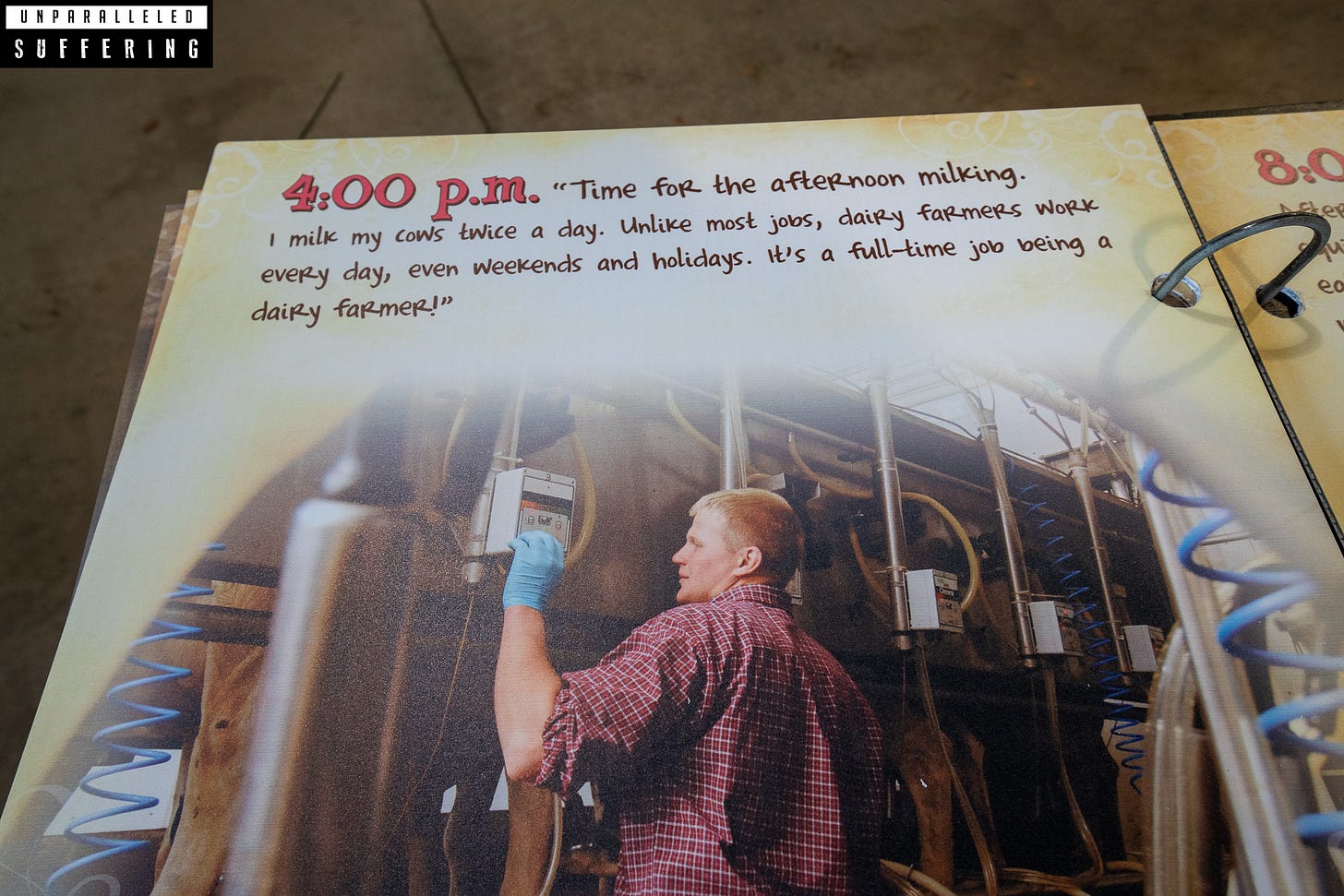
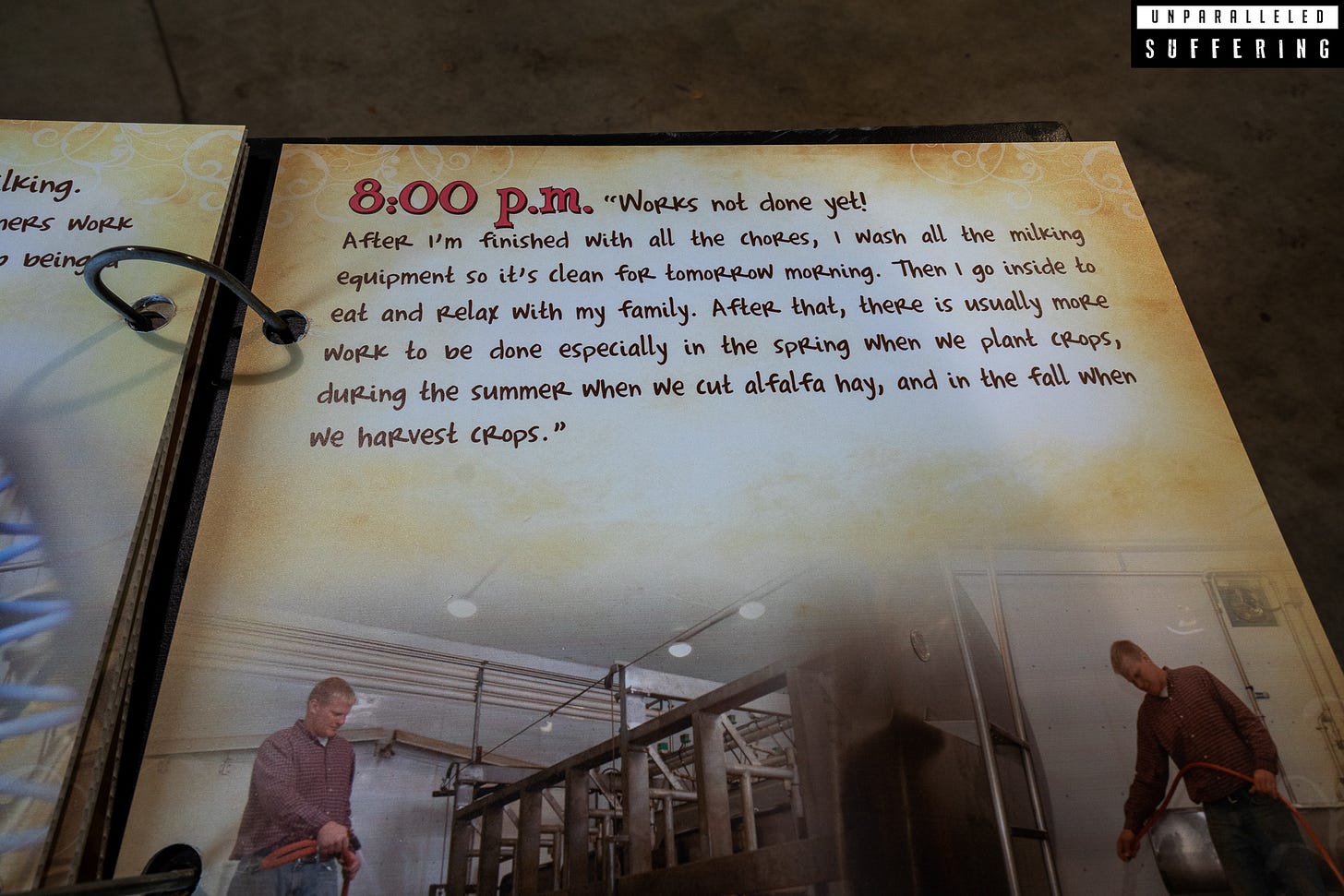
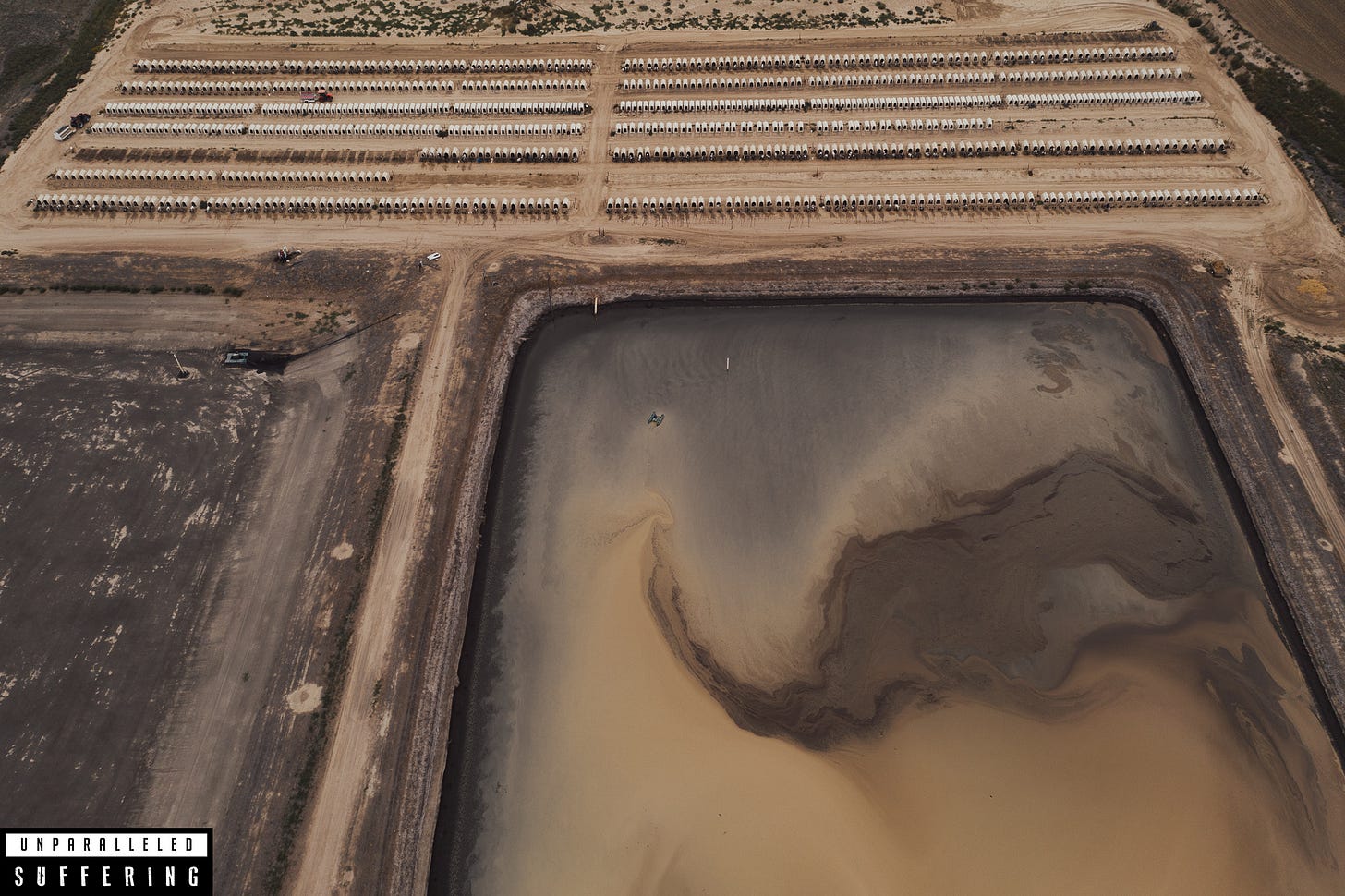


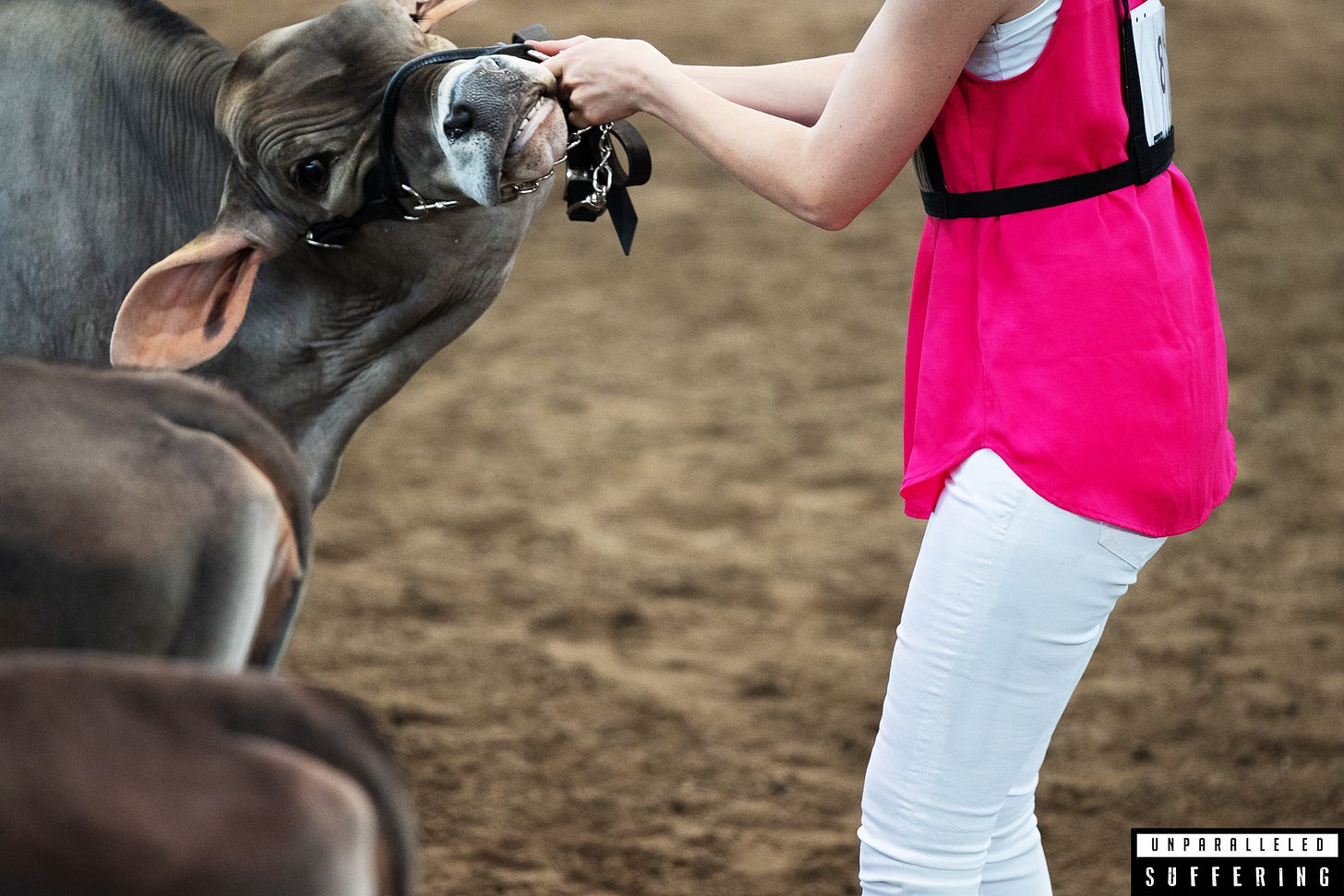
“My perspective of veganism was most affected by learning that the veal calf is a by-product of dairying, and that in essence there is a slice of veal in every glass of what I had thought was an innocuous white liquid —milk.”- Rynn Berry
“If you want to know where you would have stood on slavery before the Civil War, don’t look at where you stand on slavery today. Look at where you stand on animal rights.”- Paul Watson
“Whoever is content with the world, and who profits from its lack of justice, does not want to change it.” -Friedrich Durrenmatt
Another phenomenal exposé on the cruelty inflicted on farmed animals. Thank you for all you do!
One day, our descendants will look back upon how non-human animals were treated as a stain on humanity.
Until all animals are free from harm then none of us will be.